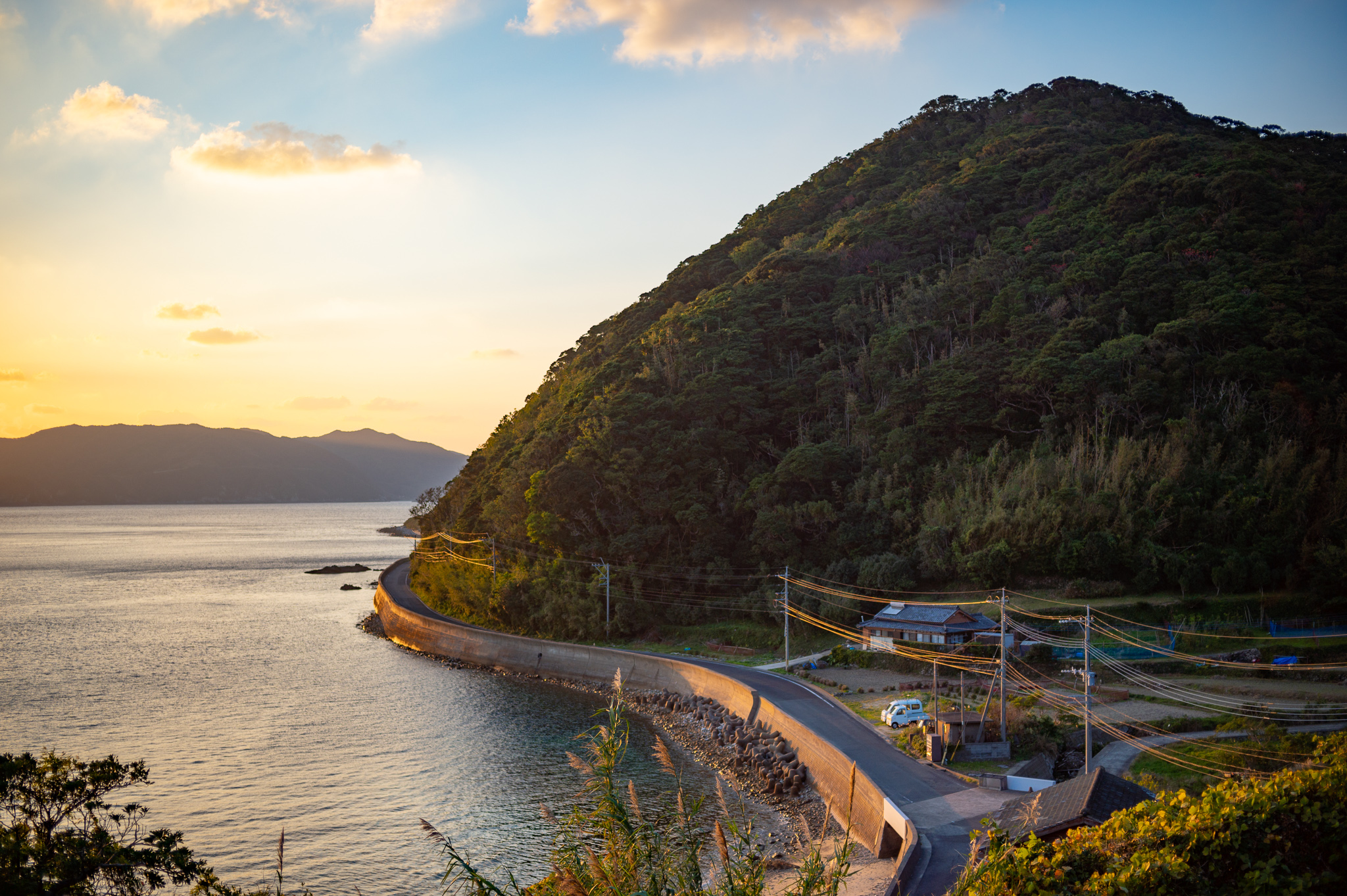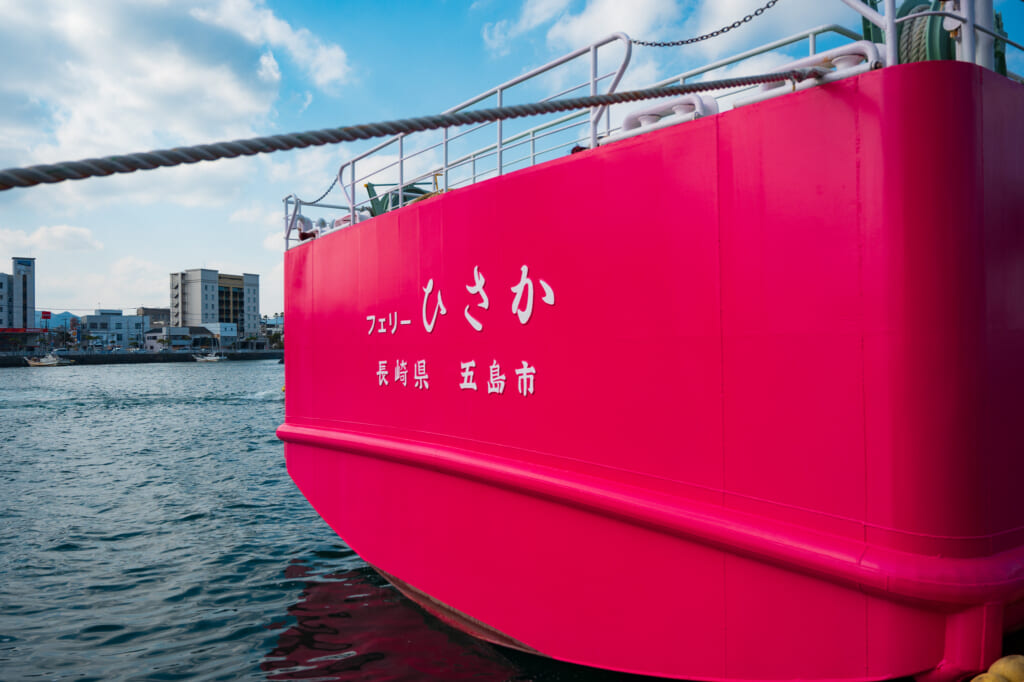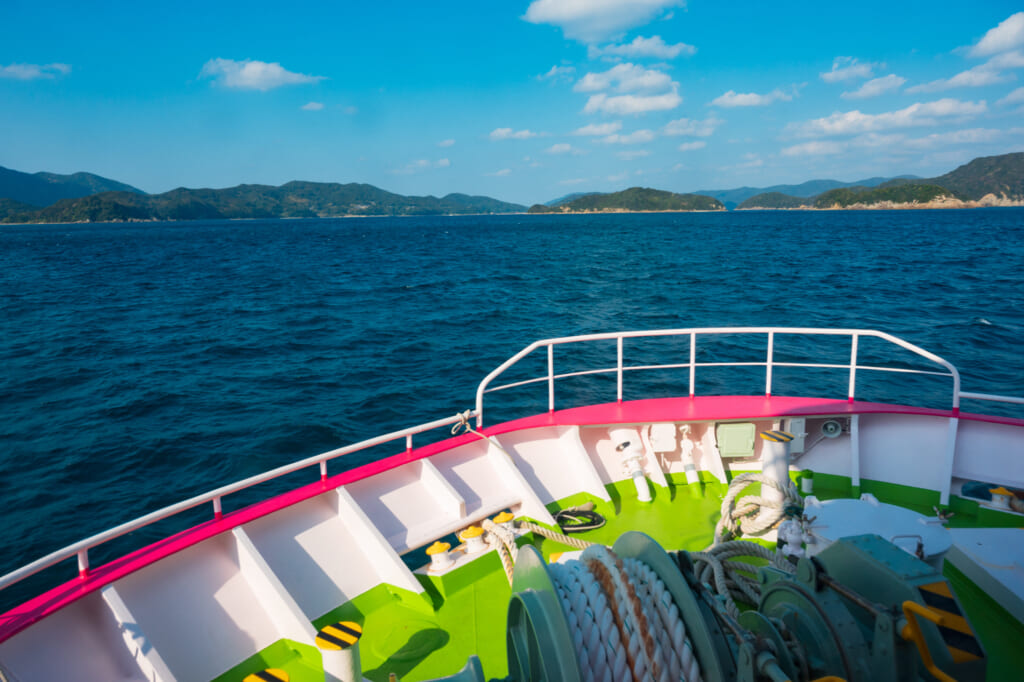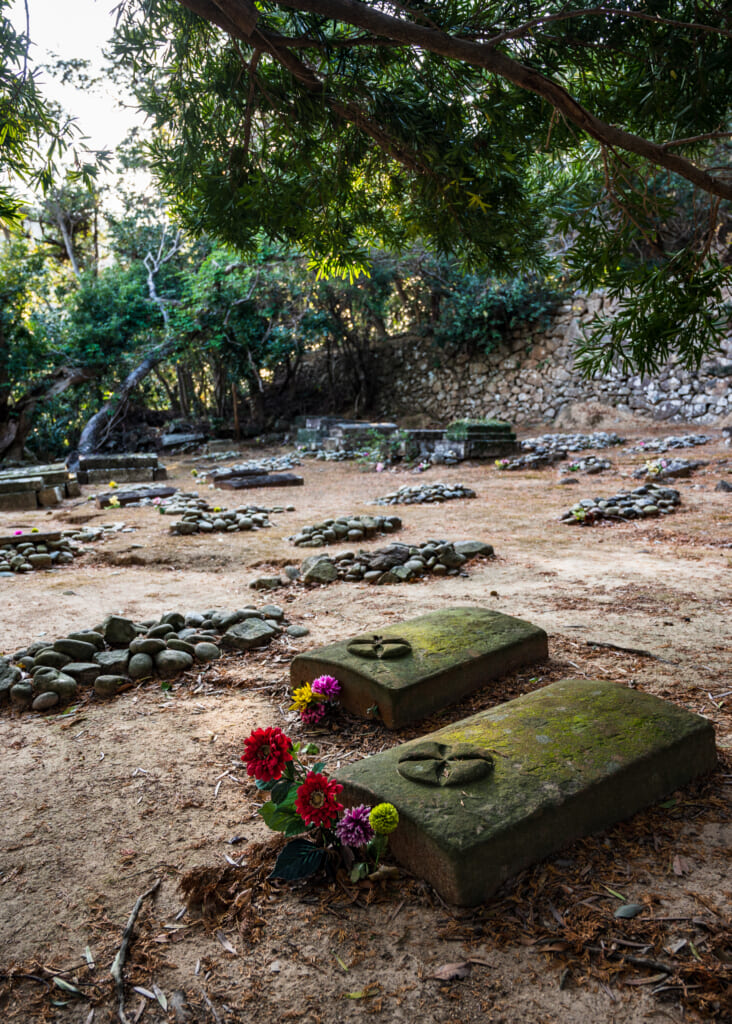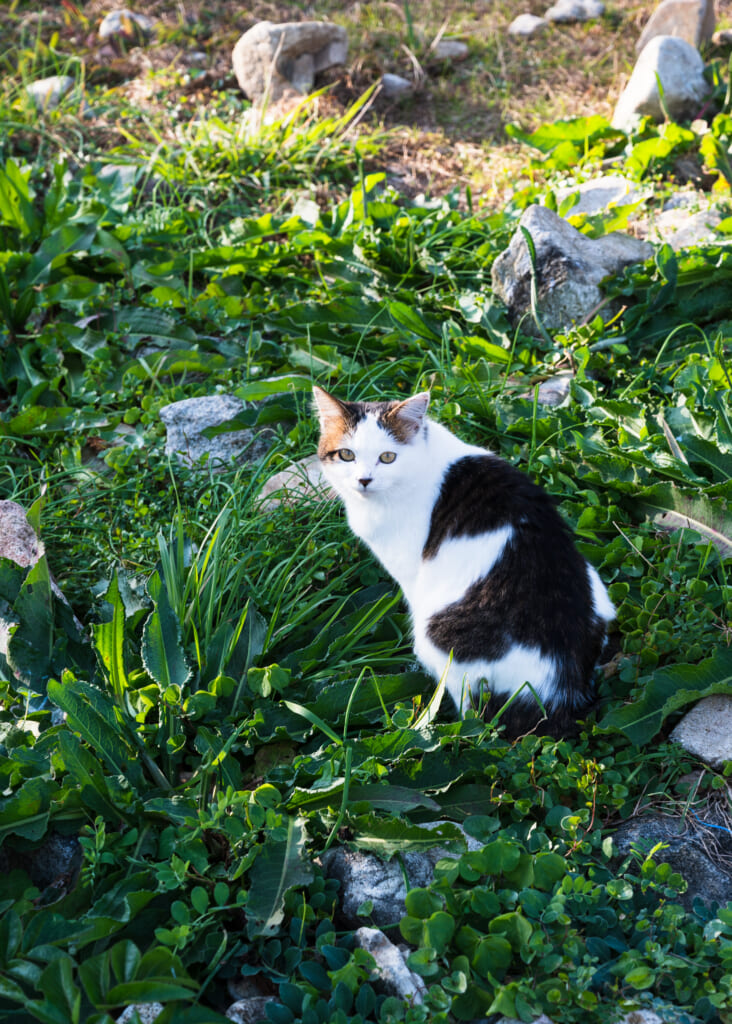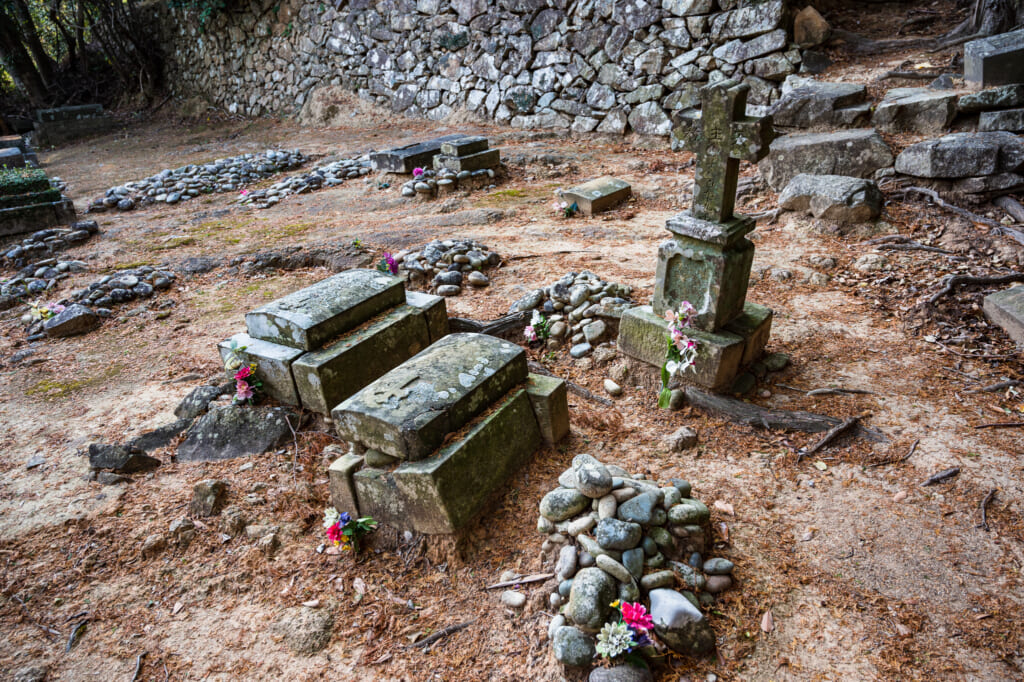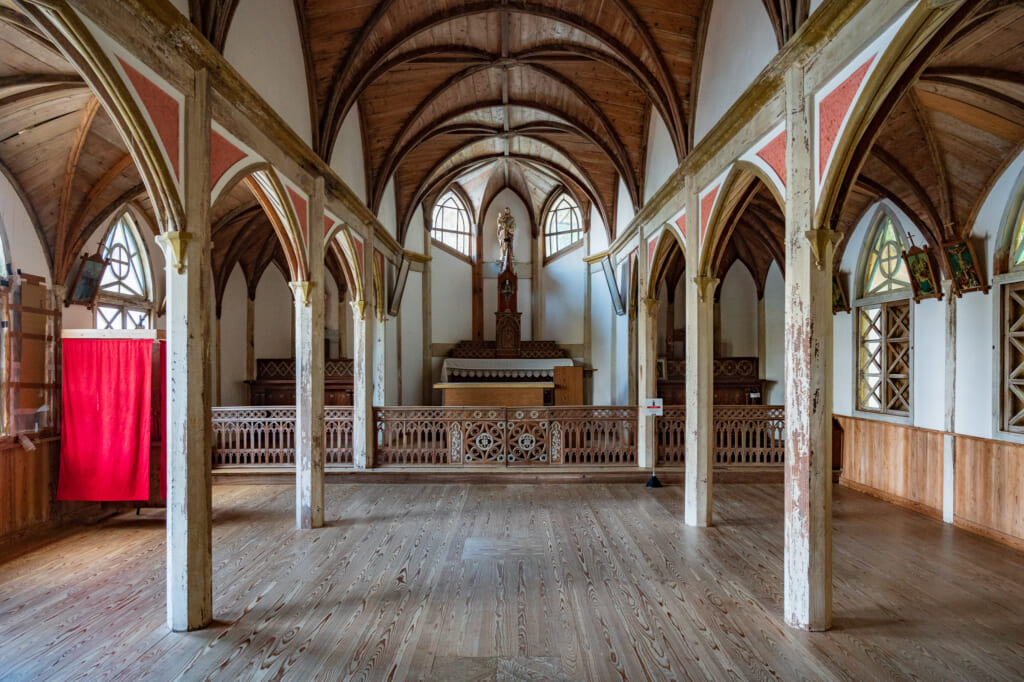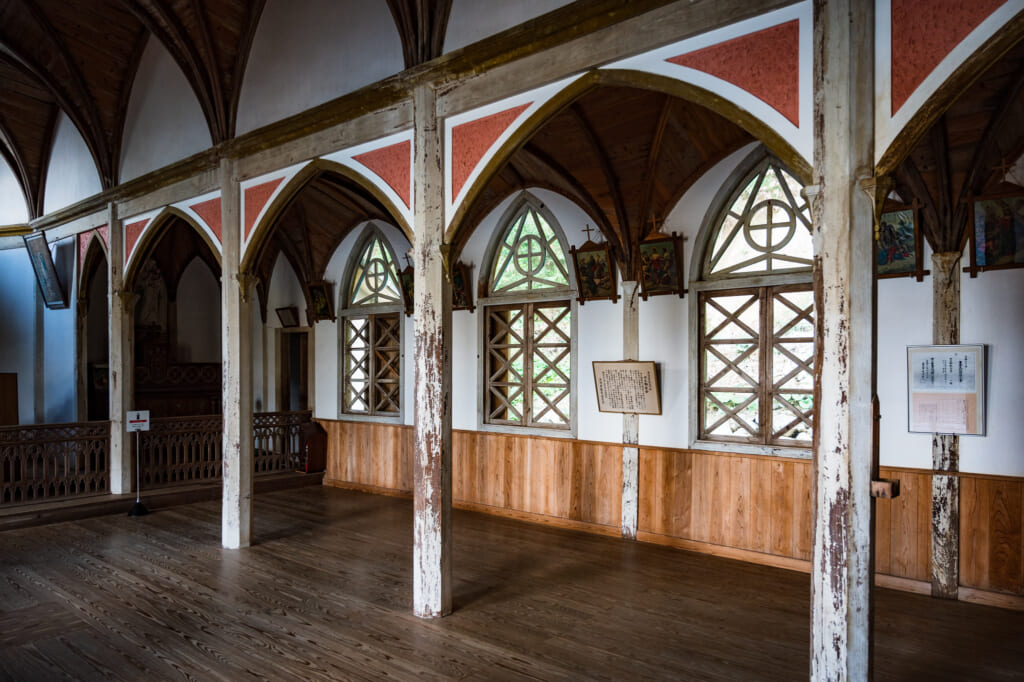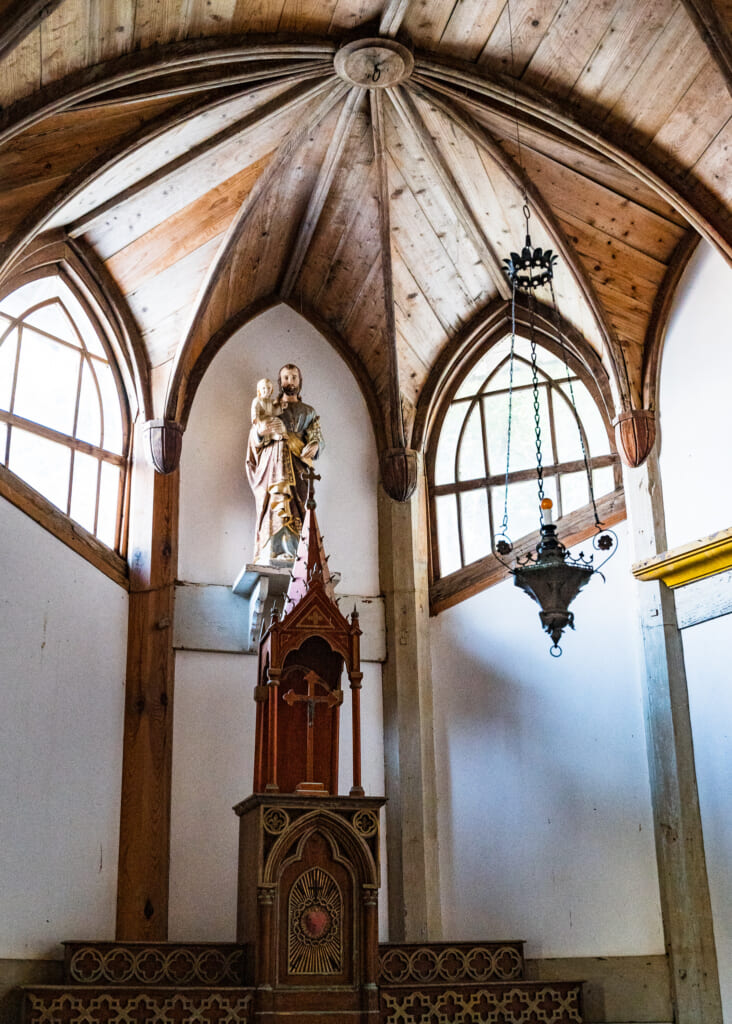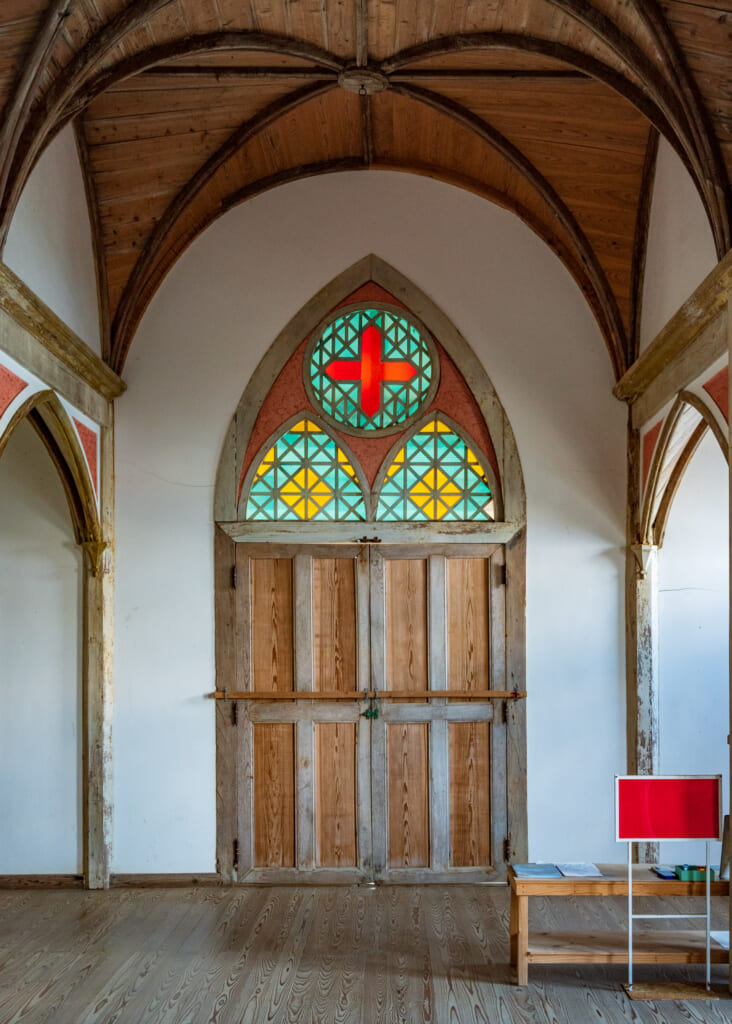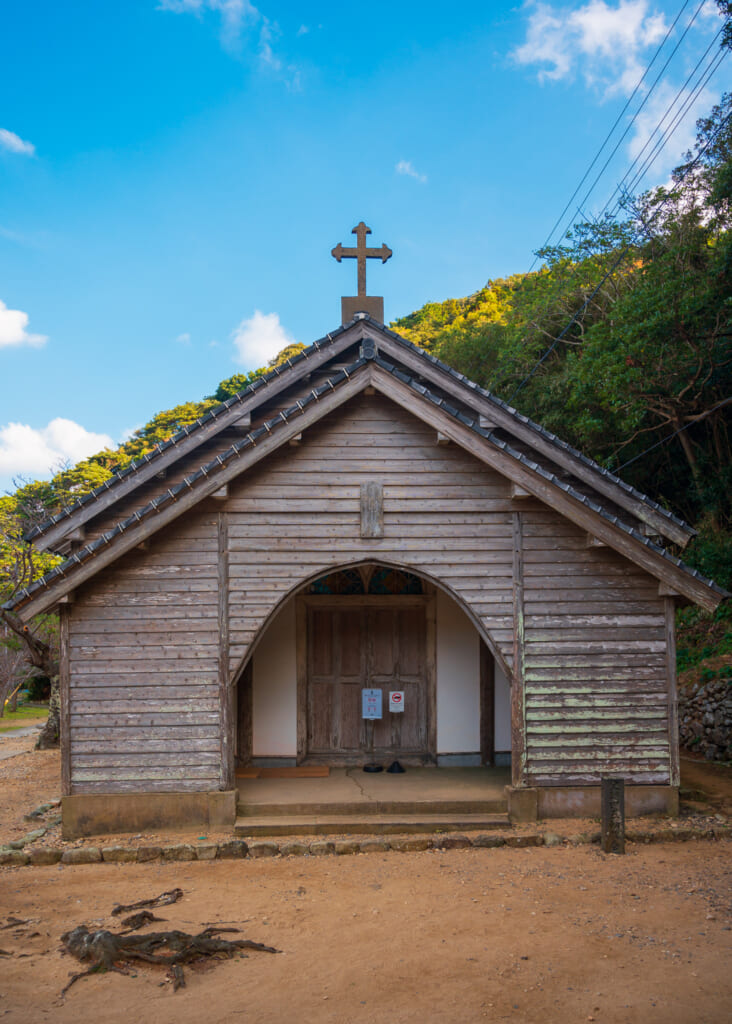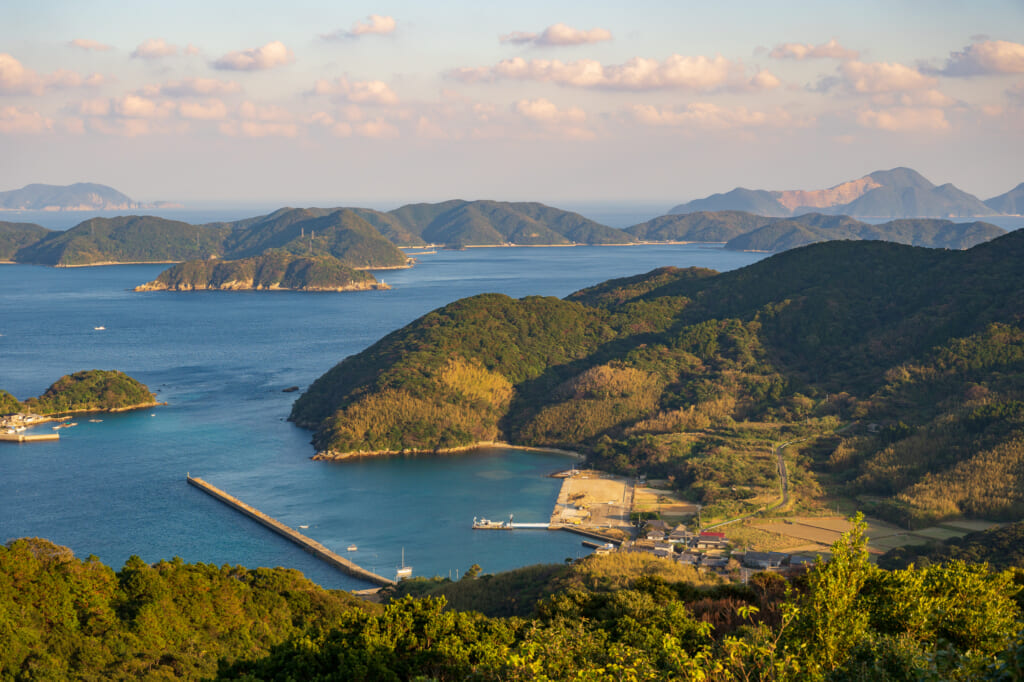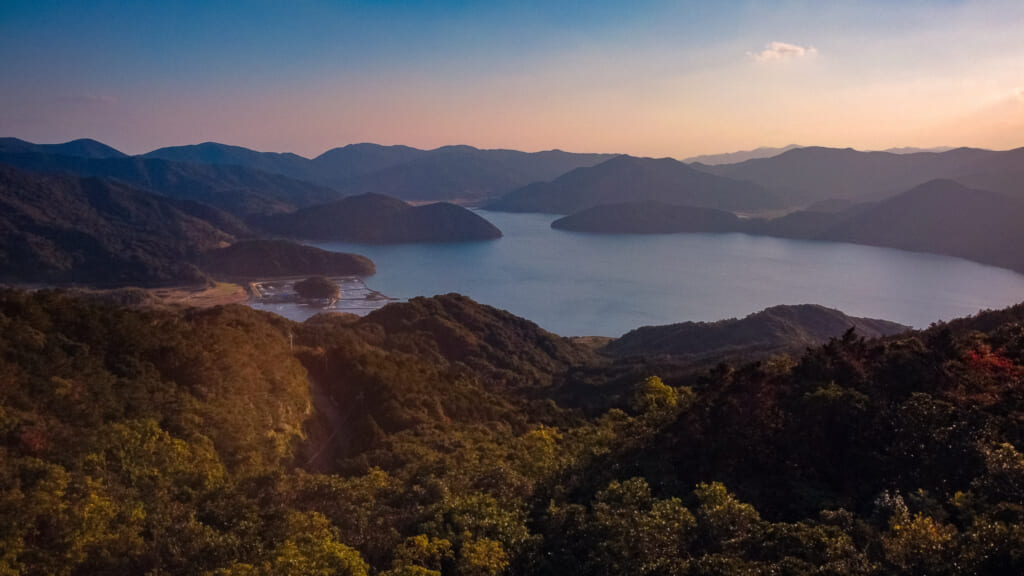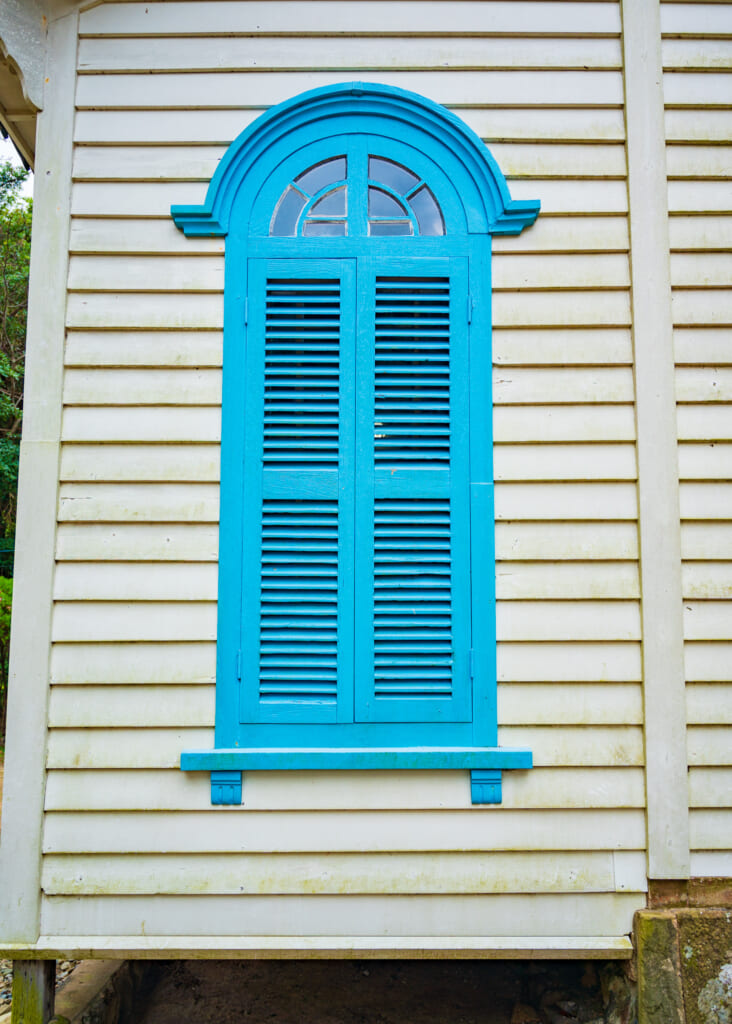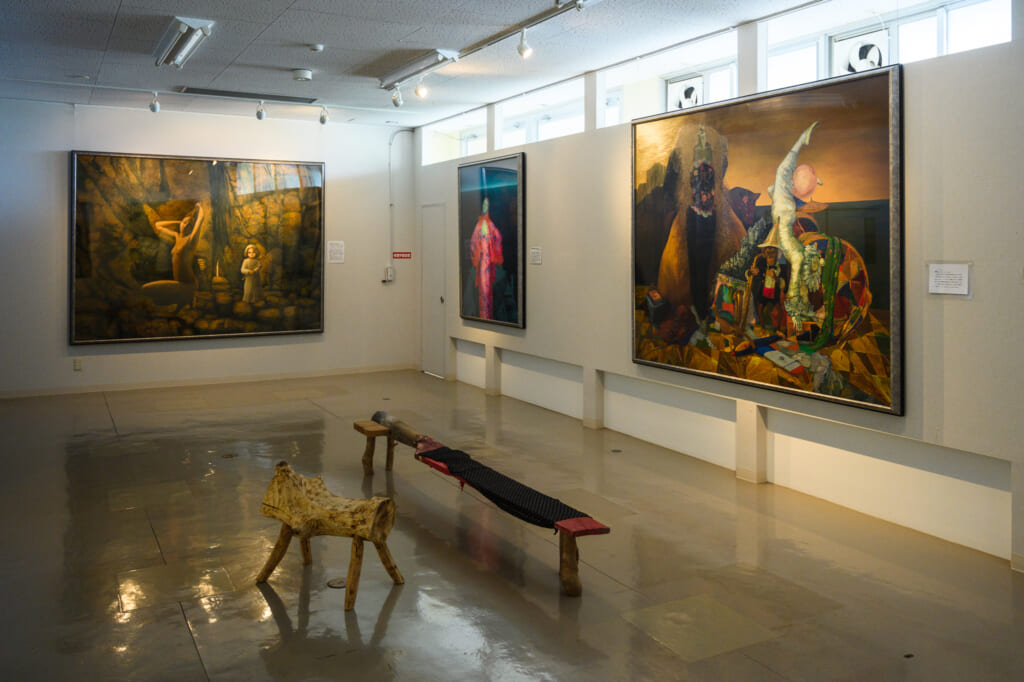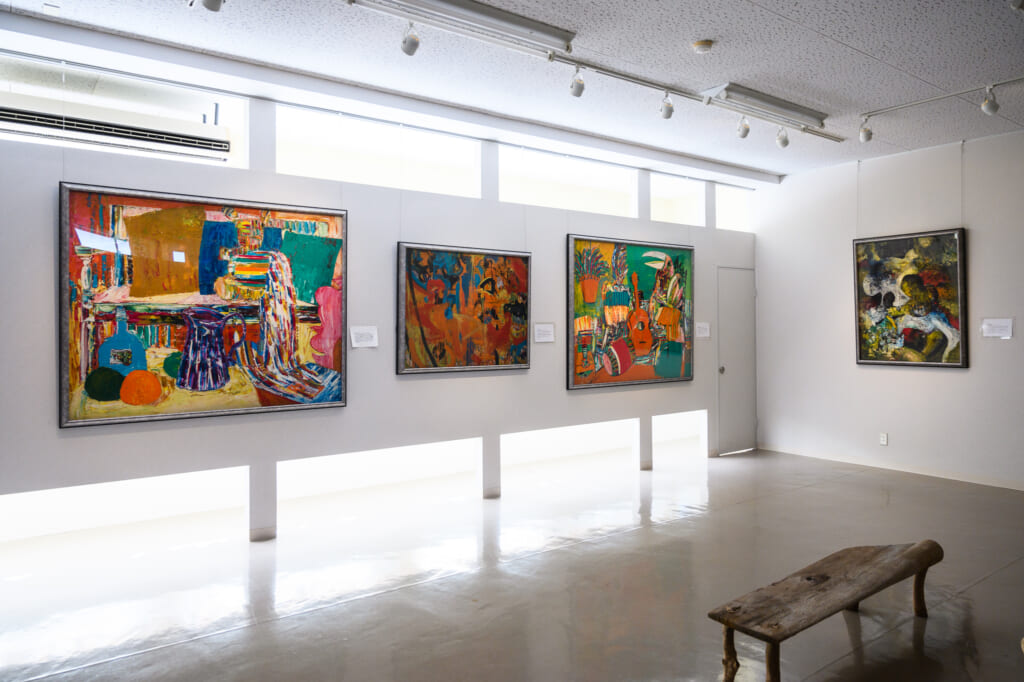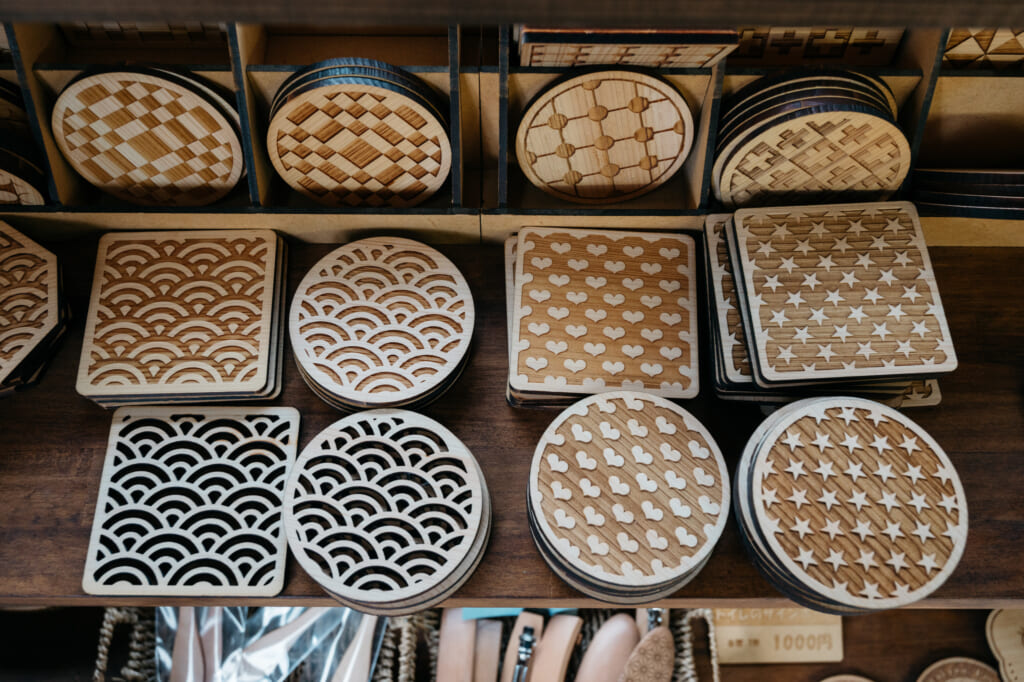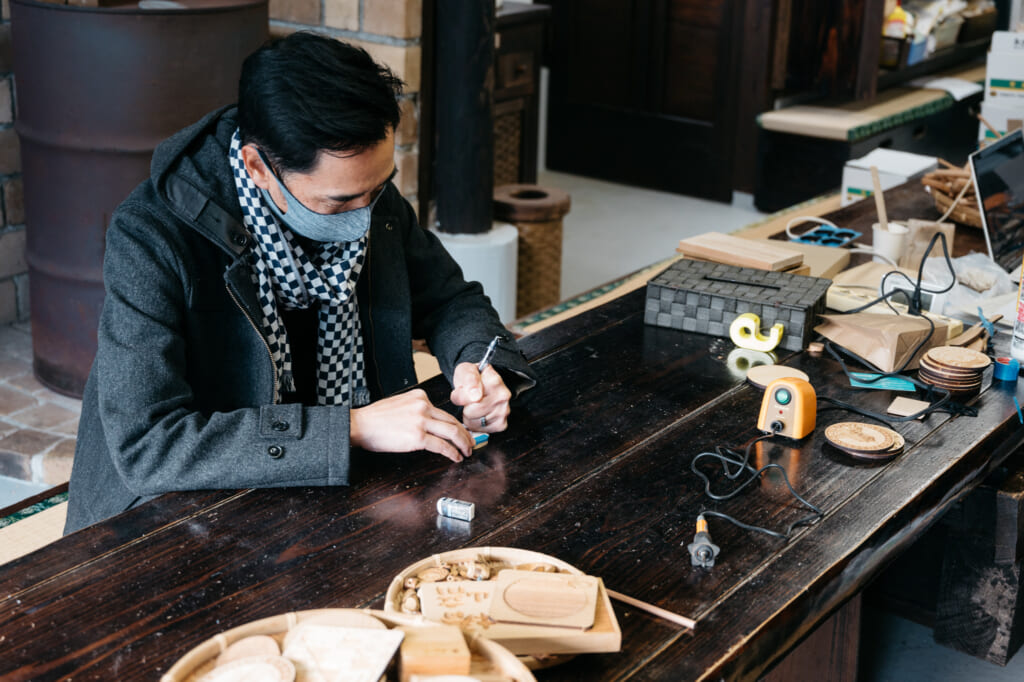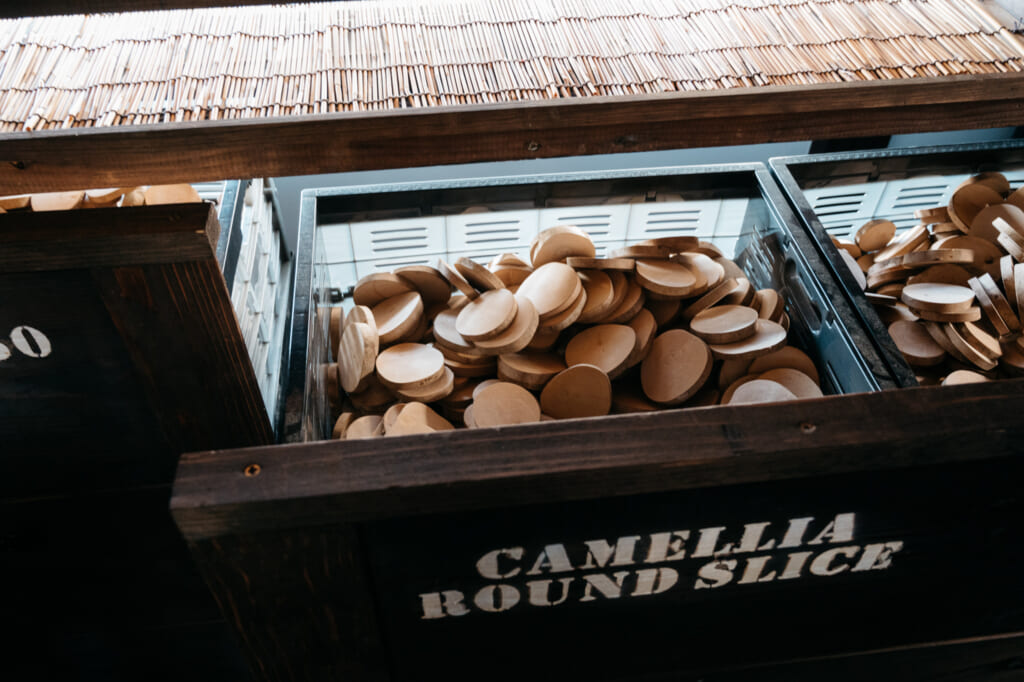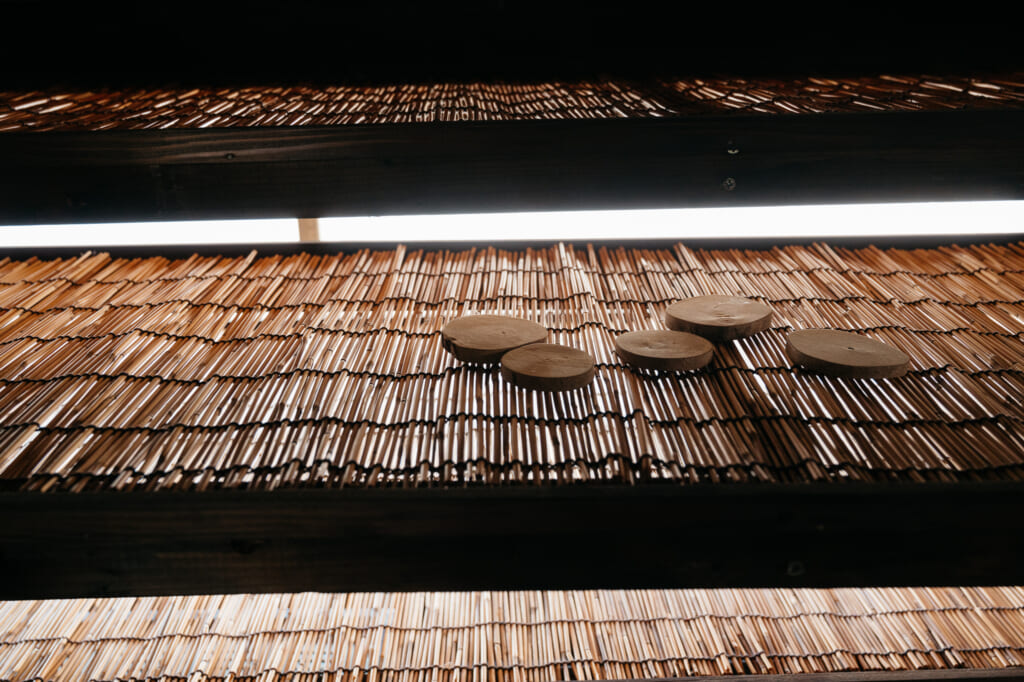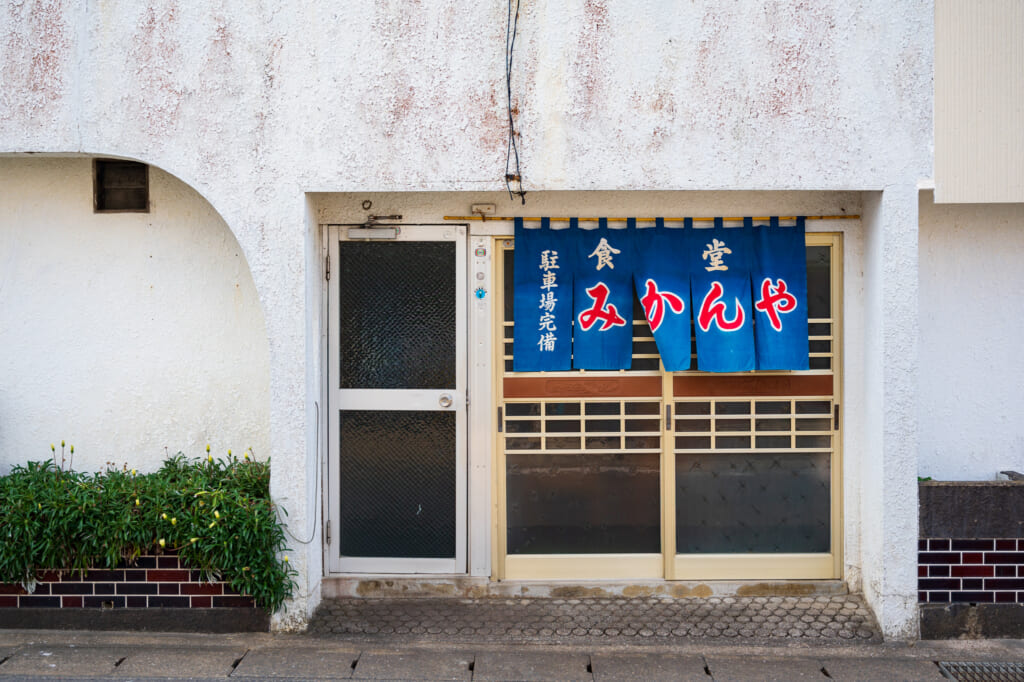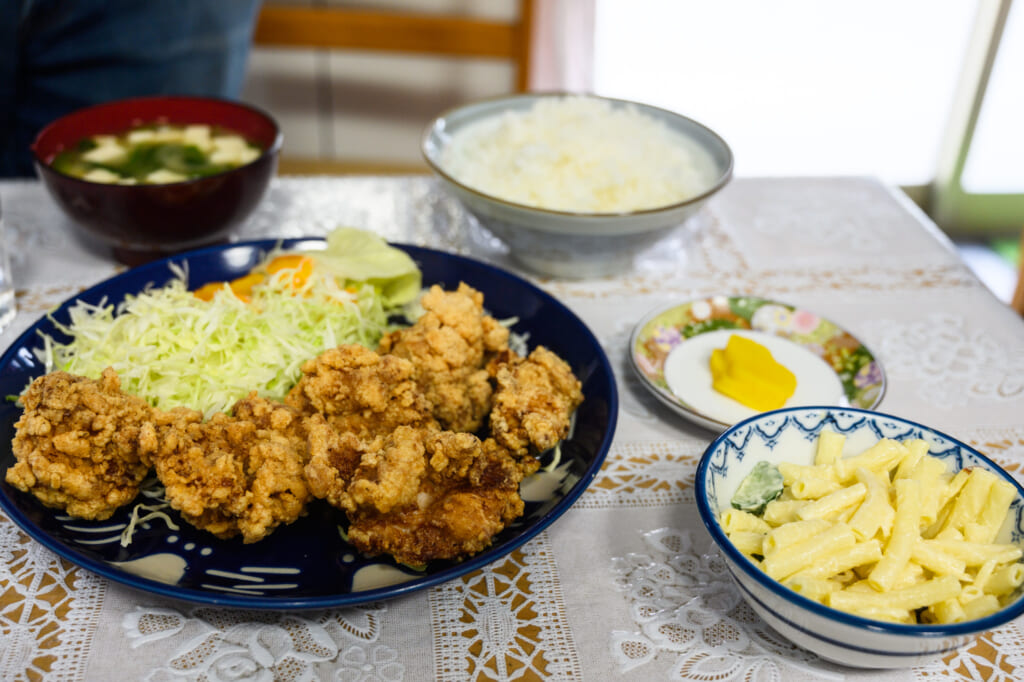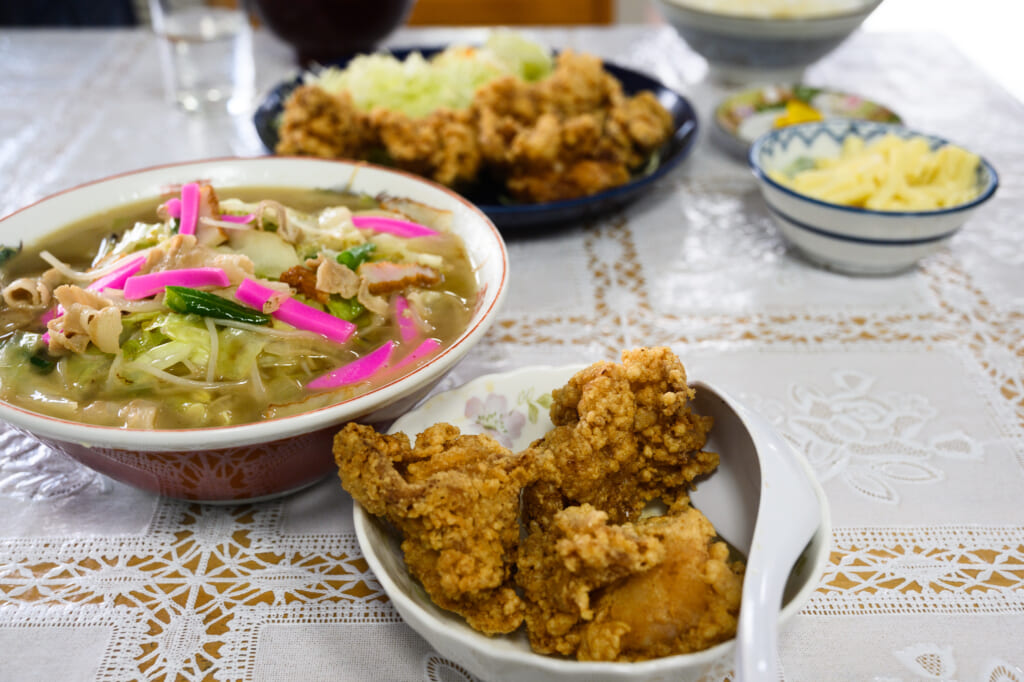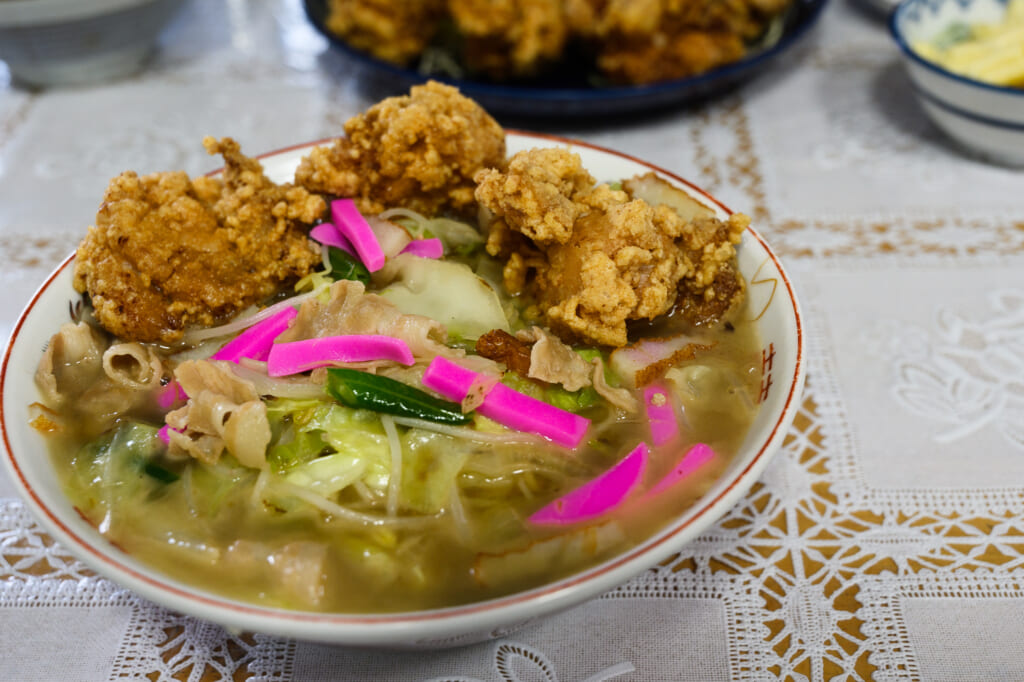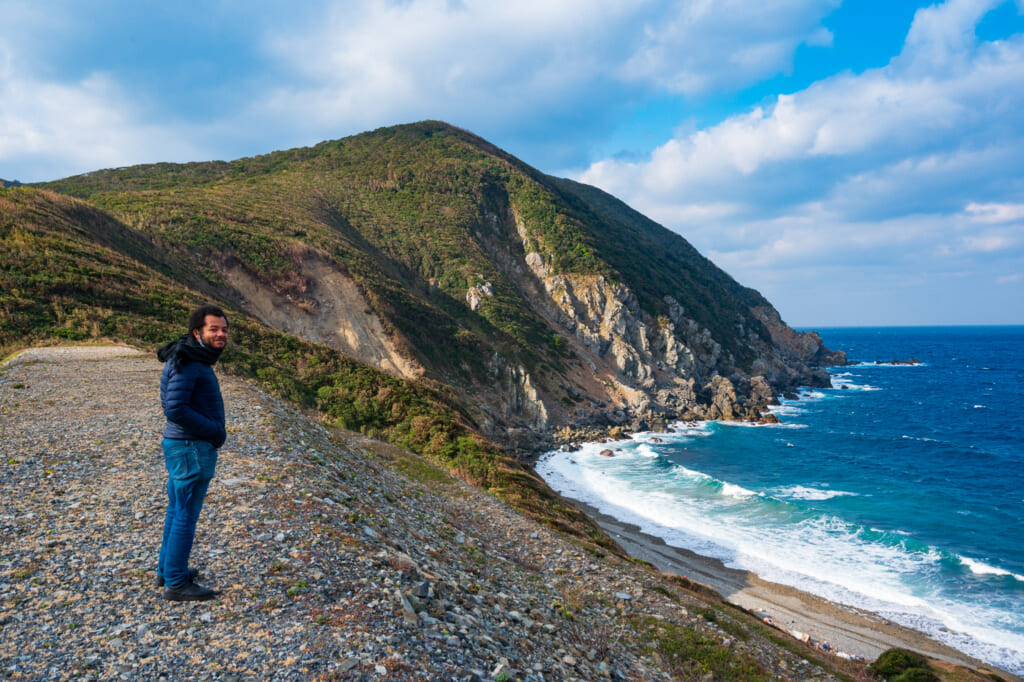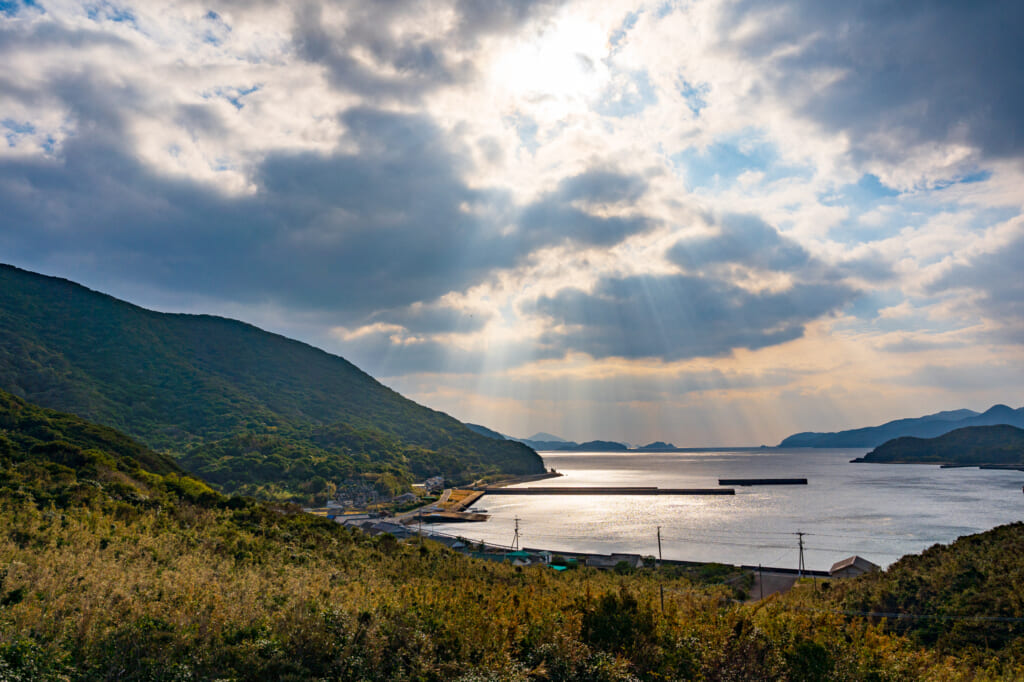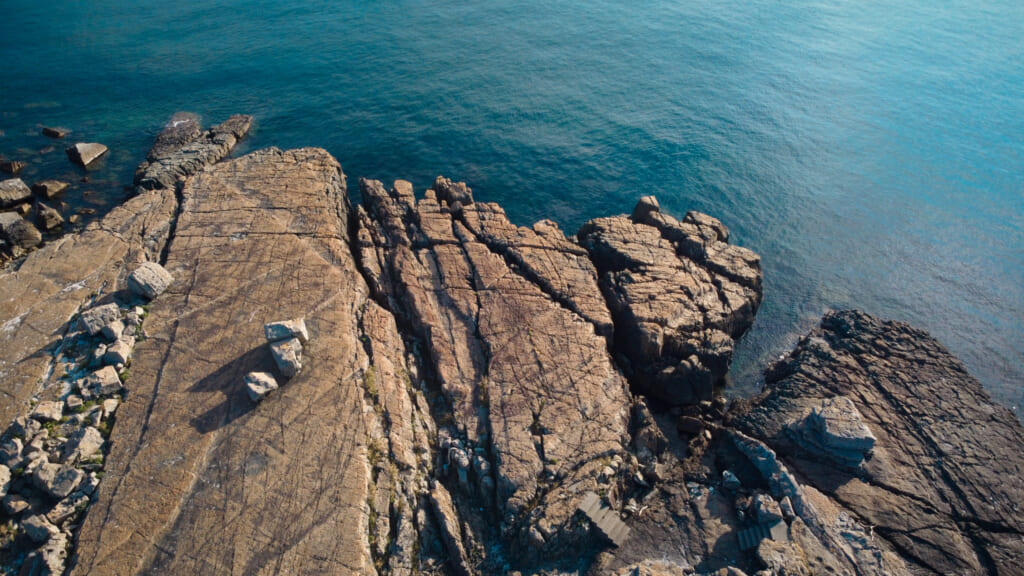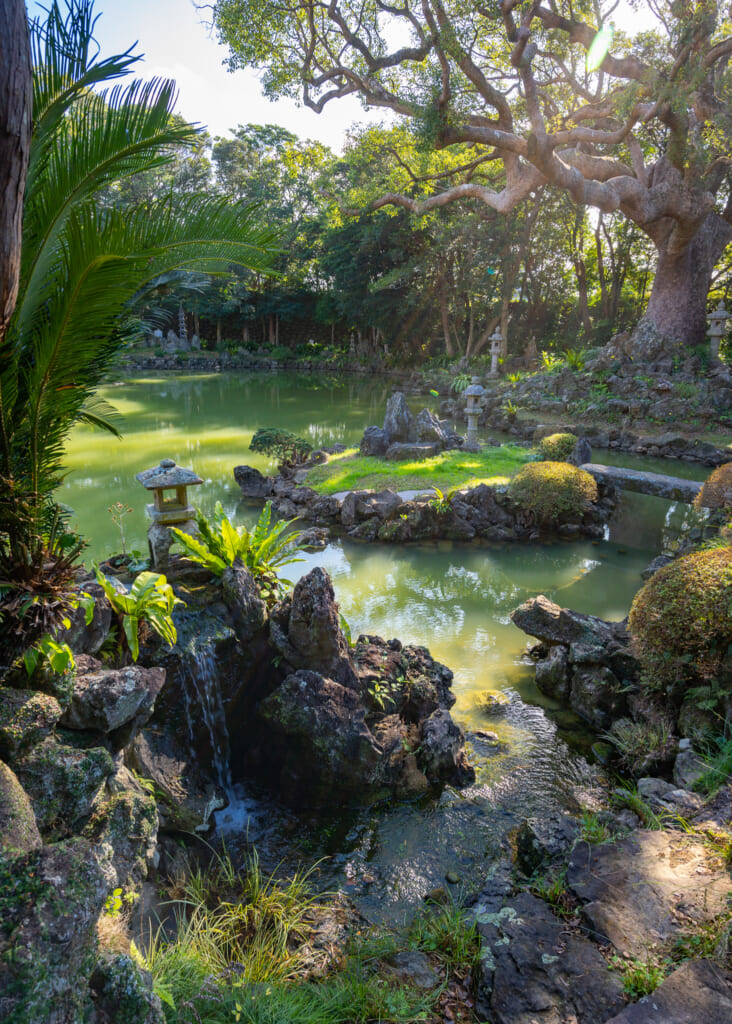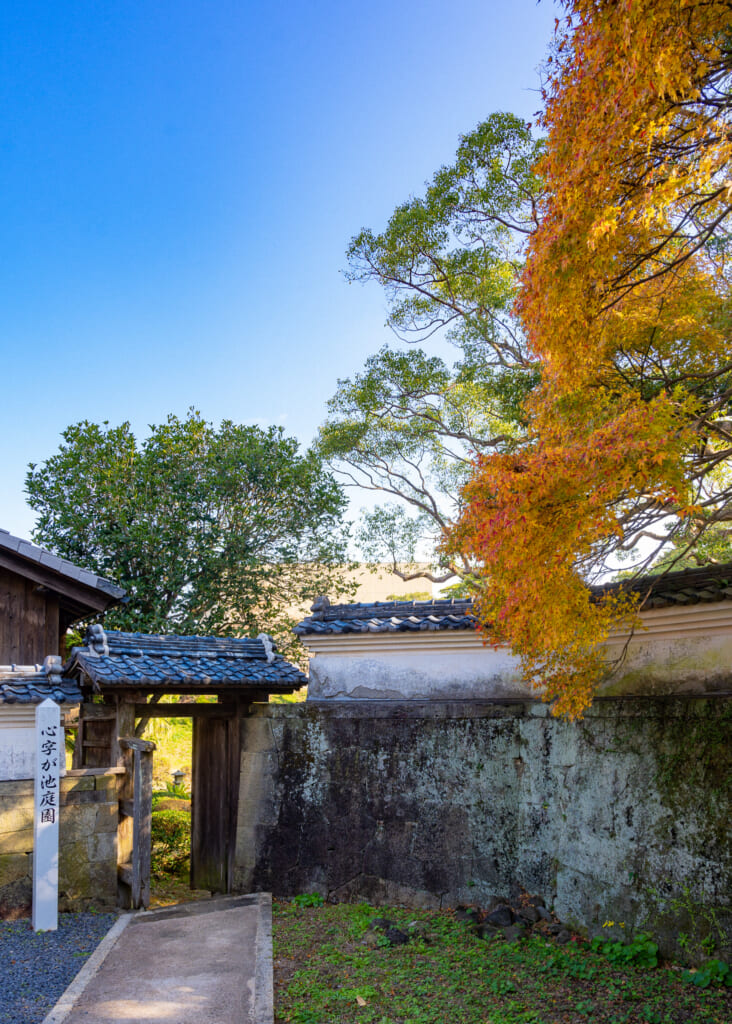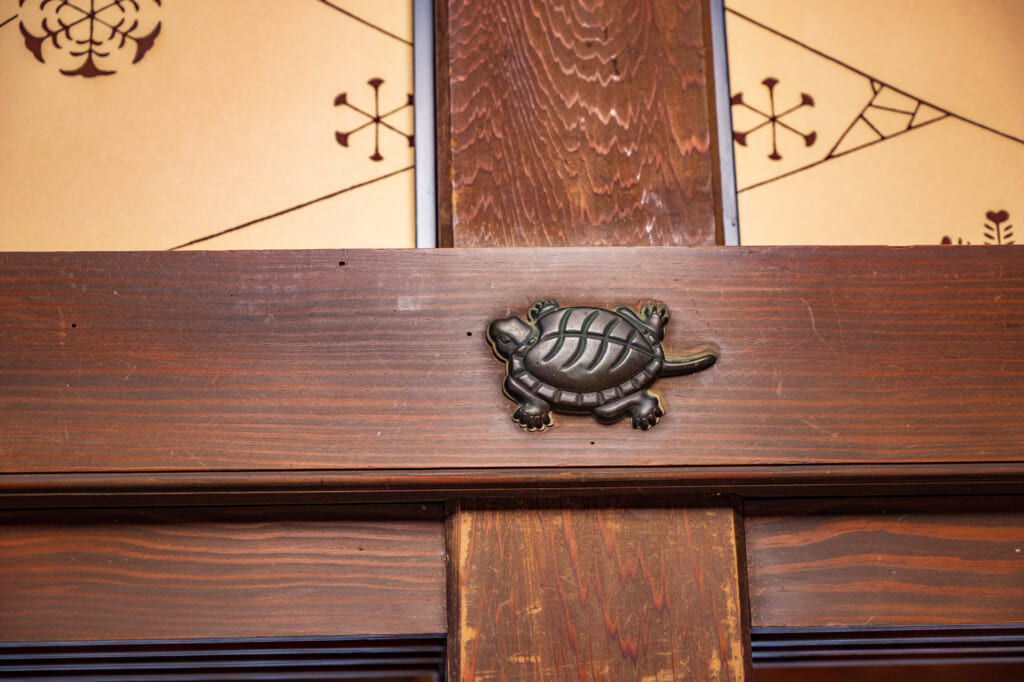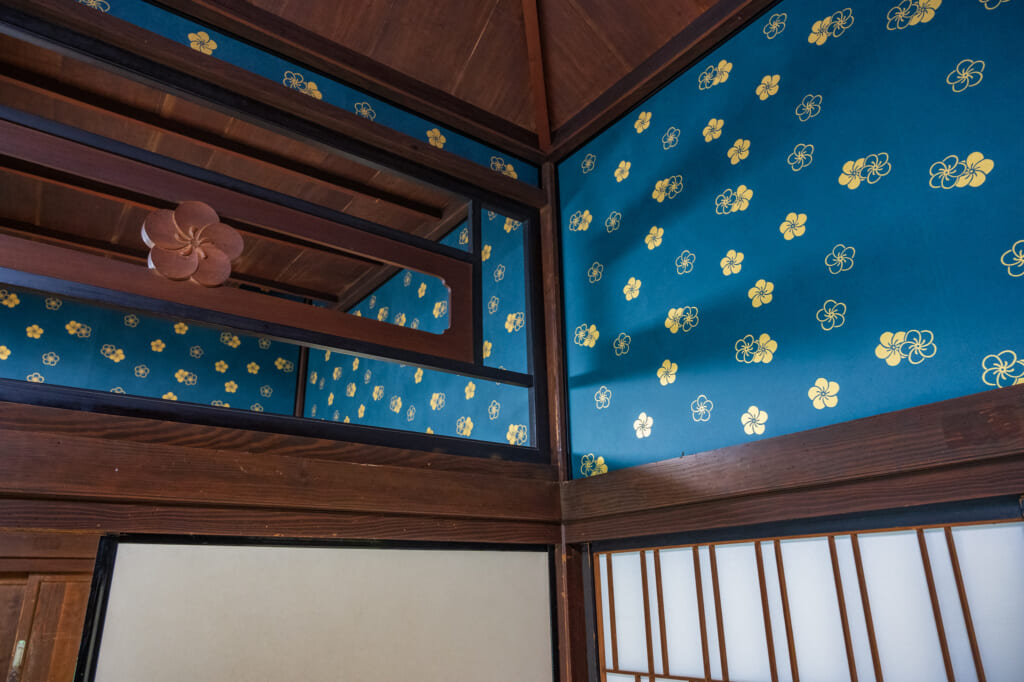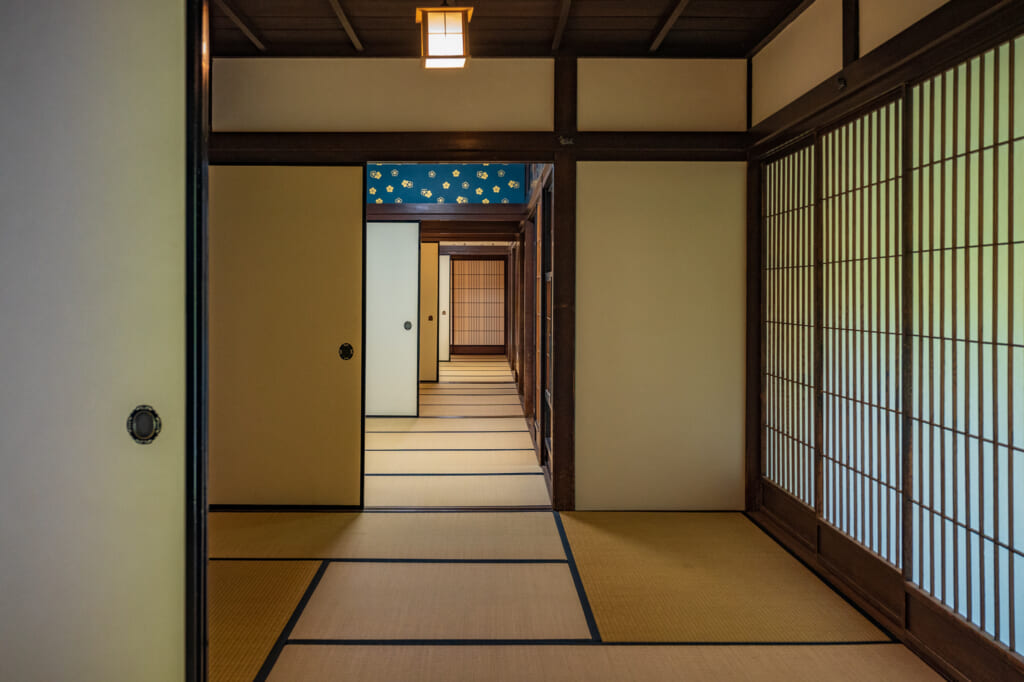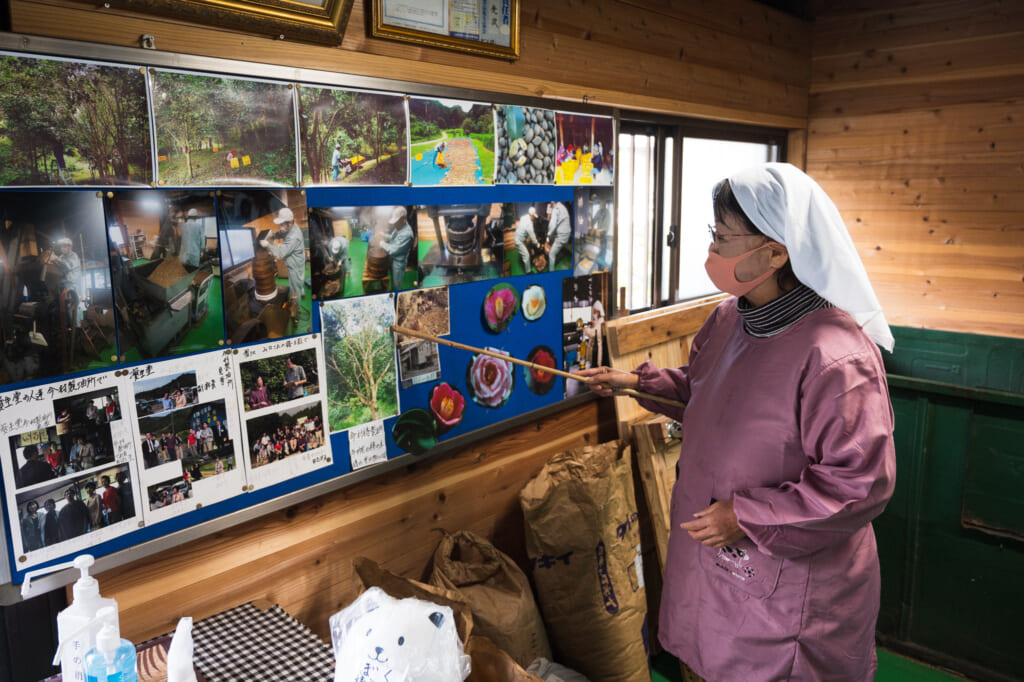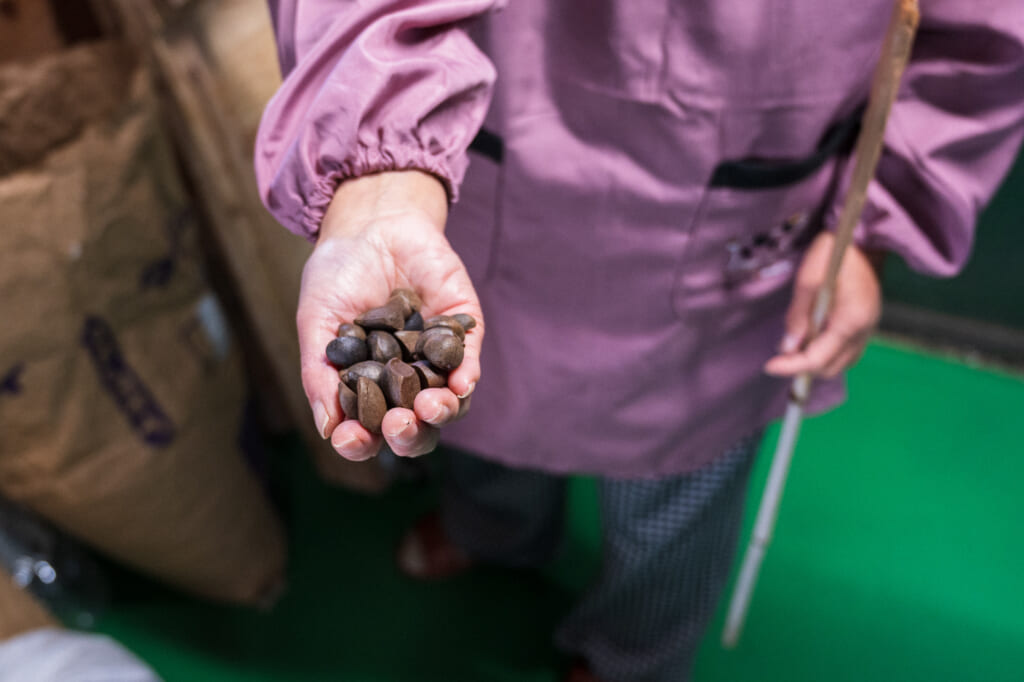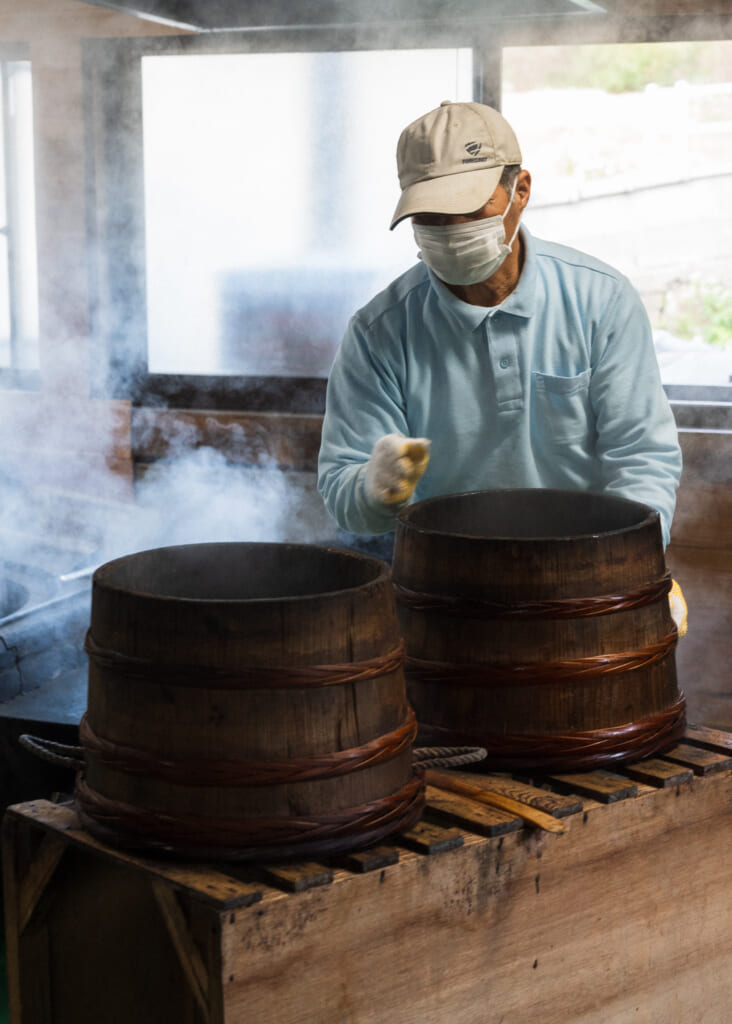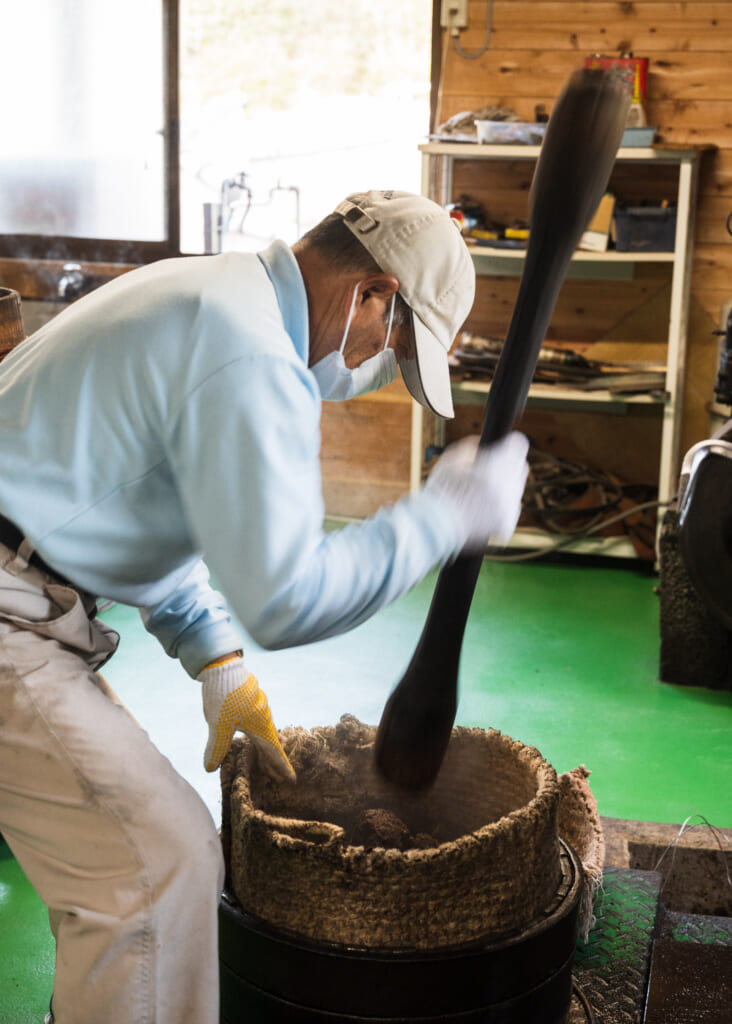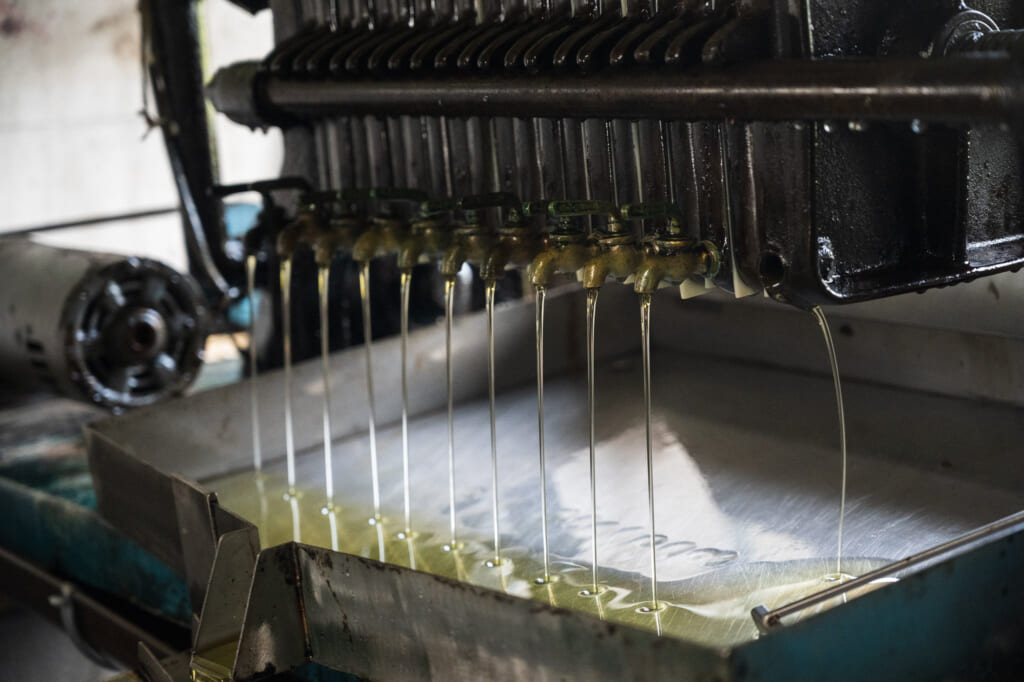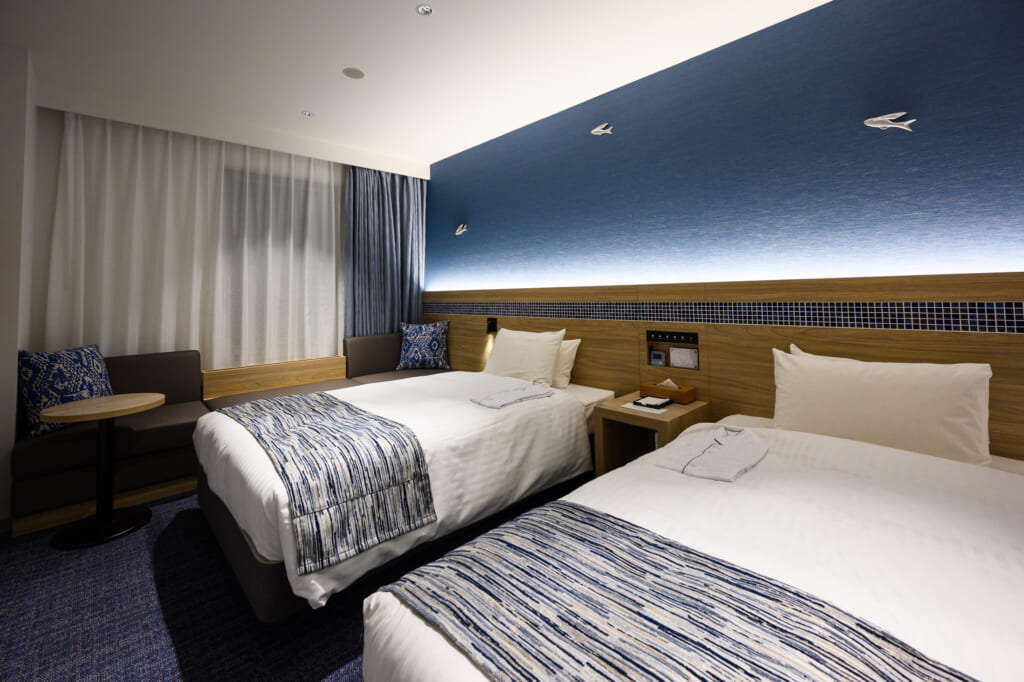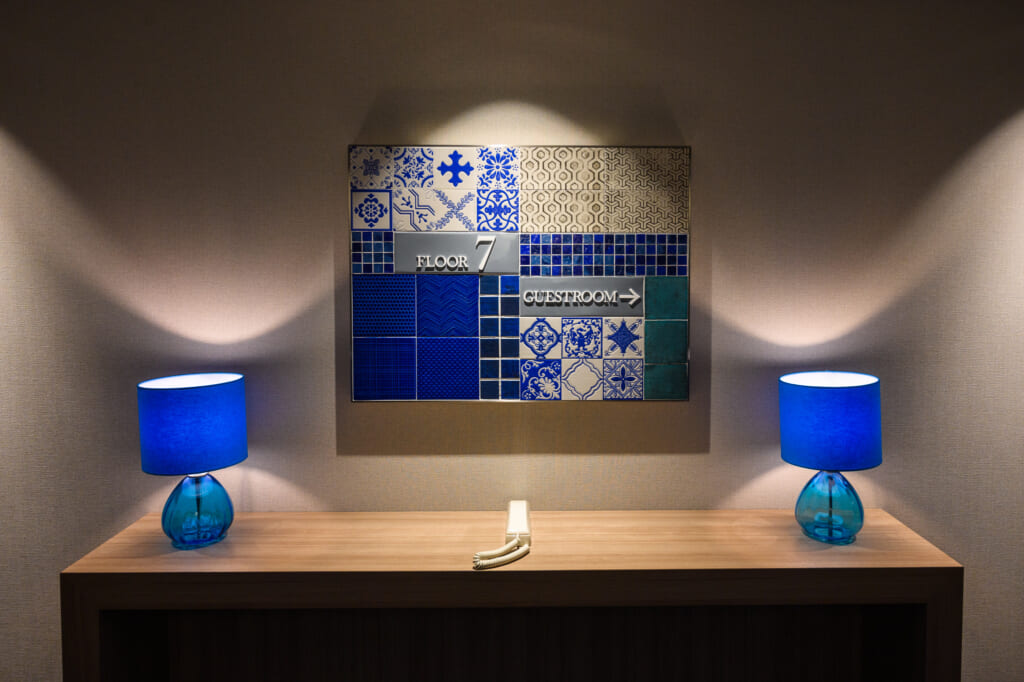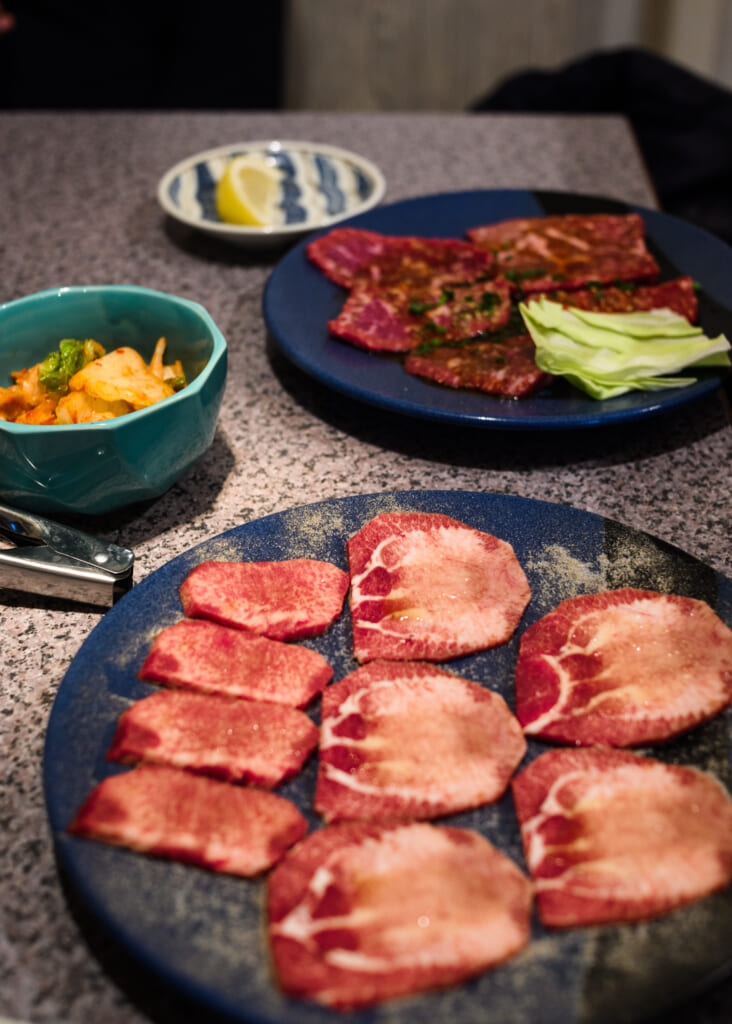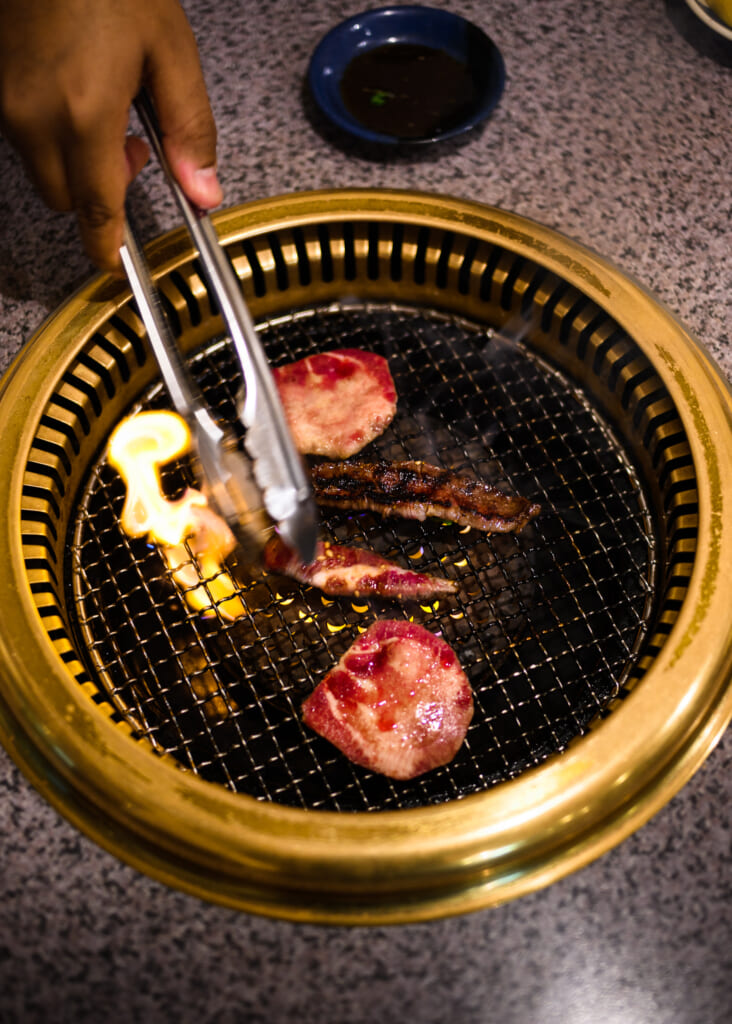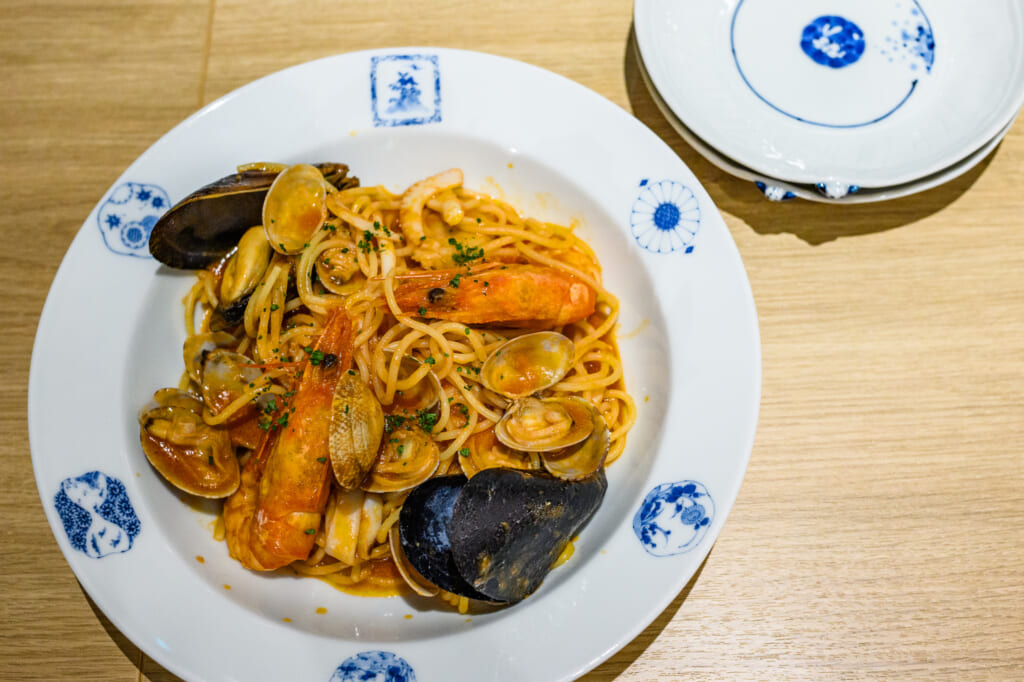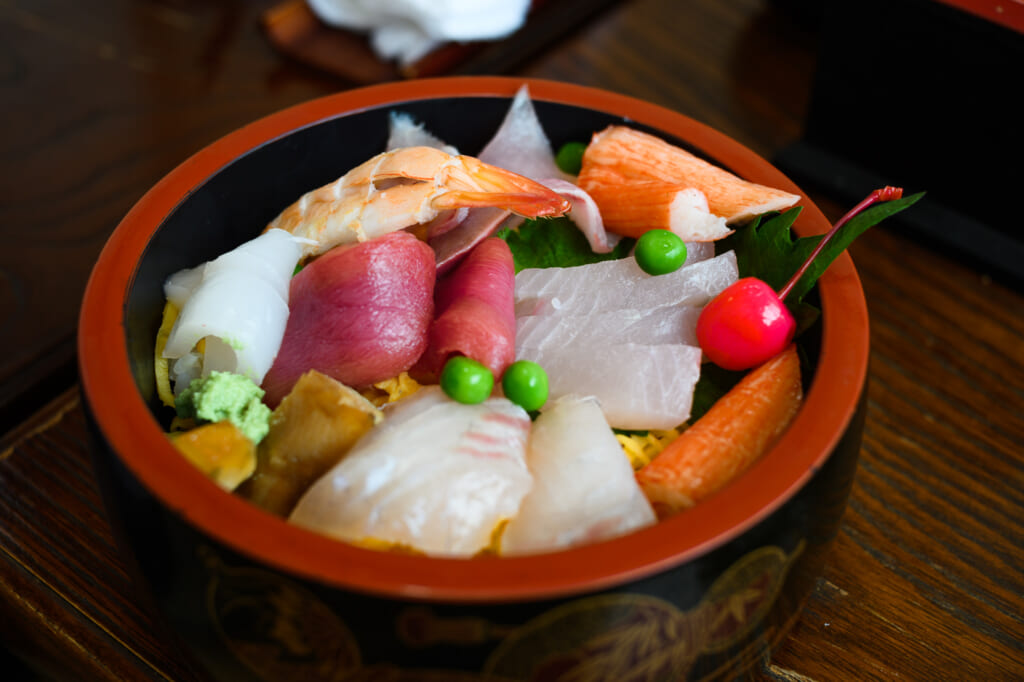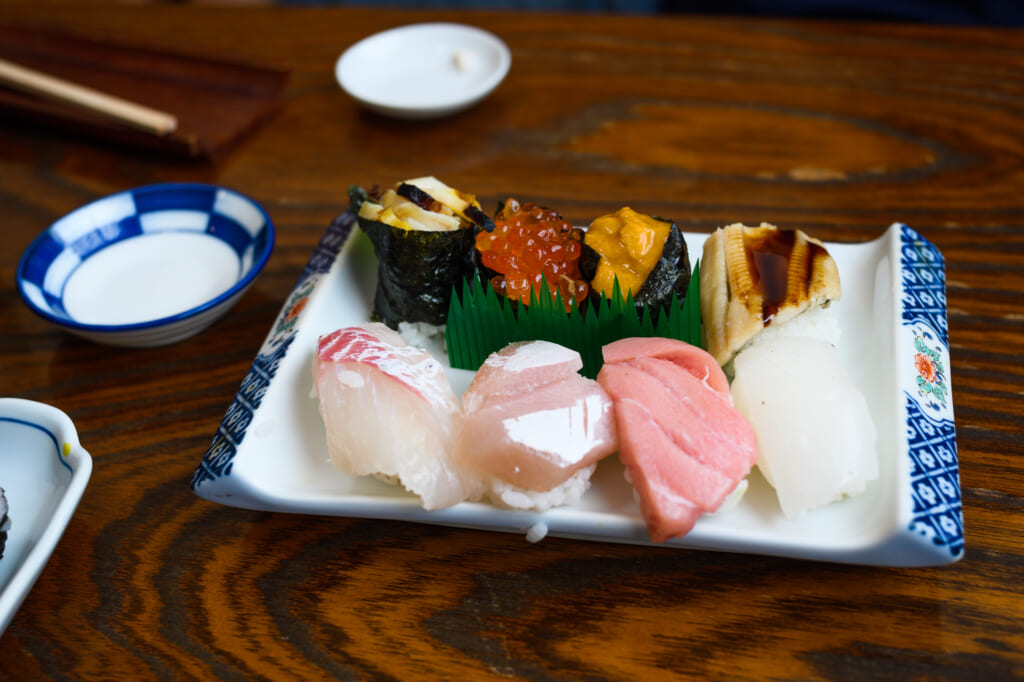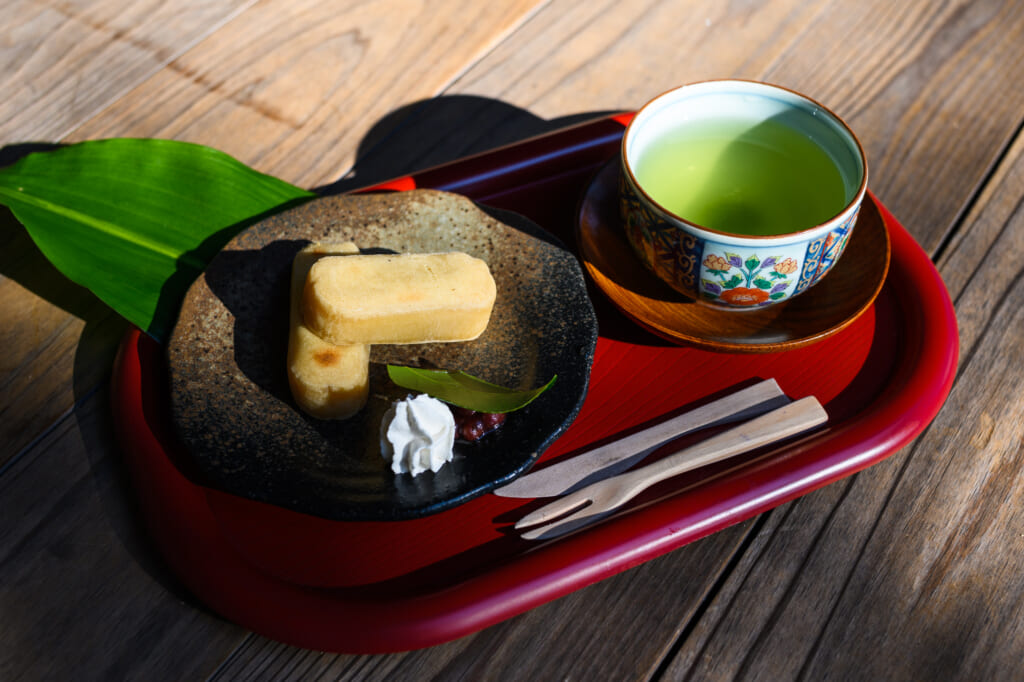The name Goto literally means 5 Islands, the number of islands the Goto Islands were traditionally said to contain. The islands are split between the northern islands of Wakamatsu and Nakadori, considered Shin-kamigoto town, and the three southern islands of Hisaka, Naru, and Fukue, considered Goto City.
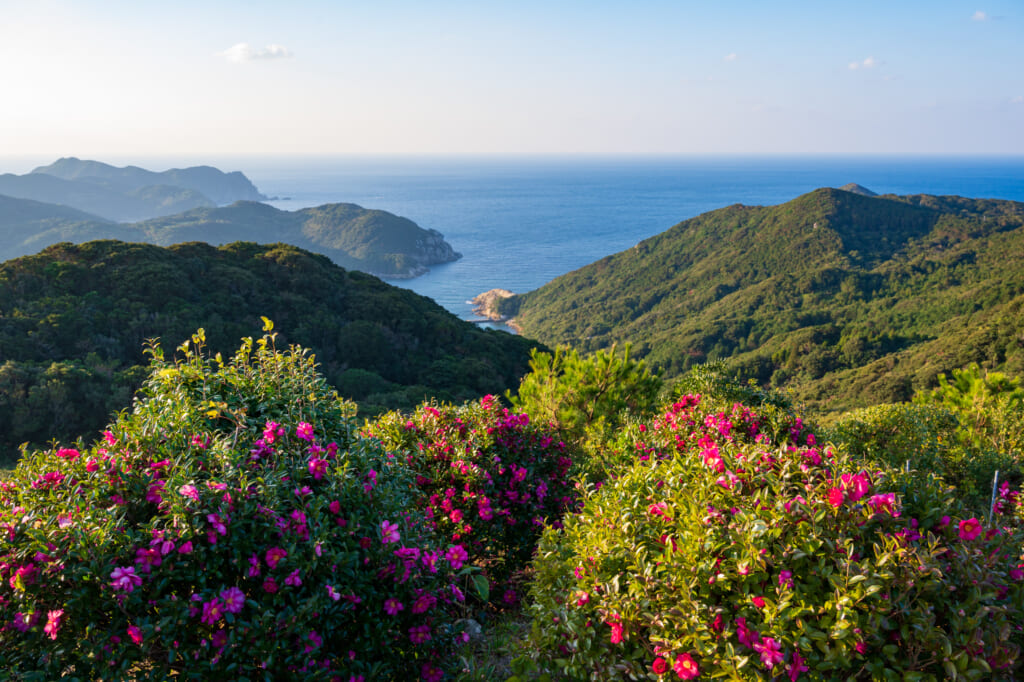
My guide and friend from the Goto city office, Olivier, met me on my arrival at Fukue Port. Over the next few days, we would explore the islands of Goto City together, uncovering its rich history relating to Japan’s Hidden Christian and feudal history, enjoying its unspoiled natural landscapes, and feasting on the plentiful and delicious foods Goto has become famous for. For the moment, this meant boarding a ferry and taking a 40-minute boat ride to nearby Hisaka Island, the next island up the chain from Fukue.
Former Gorin Church and the Hidden Christian Traditions of Hisaka Island
It took a good 45 minutes to drive from Hisaka Port to the site of the Former Gorin Church, through the narrow streets of sparsely populated Warabi village and up a small mountain on a gravel road that was still partially washed out in places, a result of a direct hit on the island from a late September typhoon. At the end of the road, we parked our little electric car in an empty parking lot and walked the remaining 10 minutes down two flights of stone steps and along the curve of a small bay. It was here we were greeted by one of the local residents: a stray cat, appearing from the tall grass to regard us with a curious stare.
As Olivier reached down to stroke his fur, the cat trotted away and up a dirt path, looking back as if beckoning us to follow. I shrugged at Olivier and began to follow as the cat led us up the path before disappearing again into the grass. We continued on, arriving at the top of the hill and the trail’s end: the Gorin cemetery. Here we witnessed the visual representation of the present and past states of Christianity in Japan. Simple piles of oval rocks marked the Hidden Christians’ graves who died in Gorin before the ban on Christianity was lifted, while traditional headstones and crosses marked the graves of those who died after.
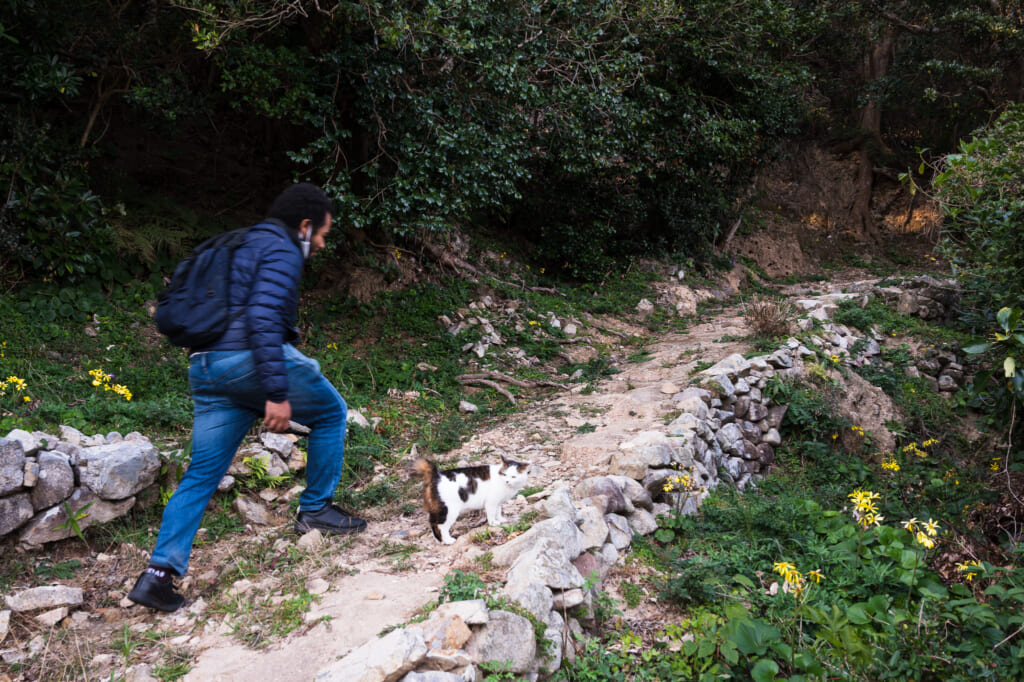
Heading back down the path, we continued on toward the Former Gorin Church. Until 1931, this church was the Hamawaki Church, built at a location close to Hisaka Port. When Hamawaki Church was rebuilt as a larger church, the entire structure of the church was relocated to this site in Gorin village and rebuilt as it was. When you enter the building, you’ll understand why the locals desired to keep the church intact; the beautifully constructed interior melds a western-influenced style with Japanese craftsmanship. Outside, the church has the appearance of a Japanese house, but inside, the rib vault ceilings create a feeling of spaciousness and invitation (be sure to make a reservation in advance or come with a tour group if you want to see the inside of the church). The Former Gorin Church is the second oldest wooden church still existing in Nagasaki; only the famous Oura Cathedral of Nagasaki city is older.
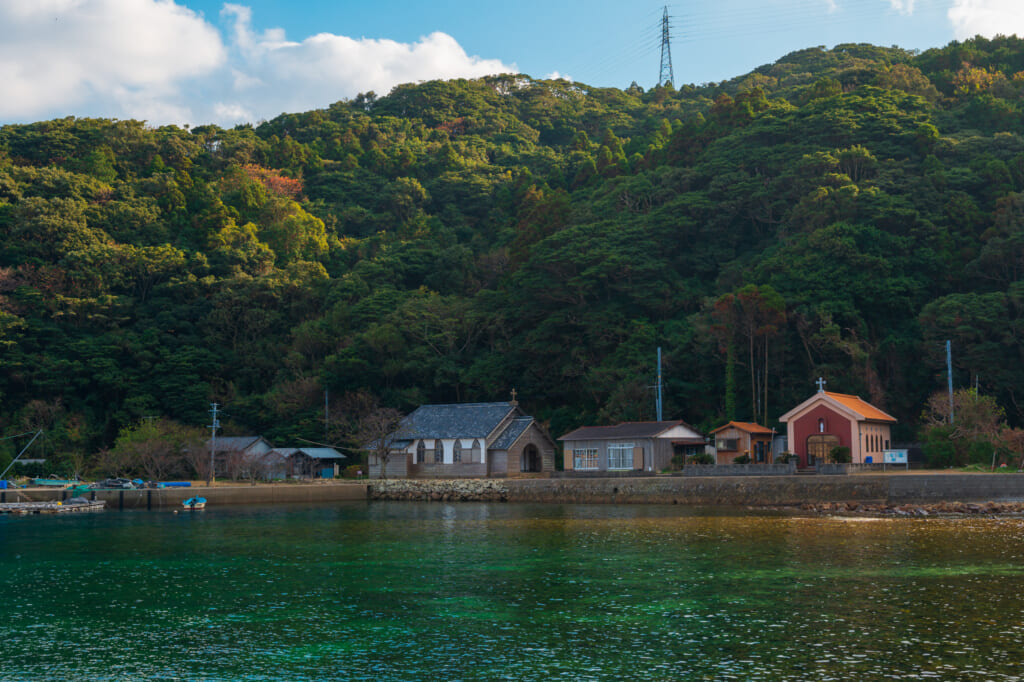
As we left the church, a small boat arrived at the port bearing a small group of Japanese tourists who had come to visit it. For those who can’t drive in Japan (or would prefer not to navigate the island’s narrow roads), organized tours by boat are a convenient way to get to the Former Gorin Church, though you might miss the view on the way back to the port. You should also make a reservation online beforehand so a caretaker can arrange to let you look around inside the church.
Olivier and I took a detour on the way back to the port. As the late afternoon sun cast a warm glow over the forest-covered mountains, we admired the horseshoe shape of Hisaka Island from the vantage point of Origami Observatory. Here, I intended to capture dramatic drone footage of the scenery, but my little drone attracted the attention of a group of black-eared kites, who have been known to snag drones out of the skies in their strong talons just for fun. Not wanting any trouble with these curious birds, I brought my drone in for an early landing.
Though we only spent a few hours on Hisaka due to the shortened hours of daylight during the winter months, a full day would have allowed us to explore more of the island’s Hidden Christian heritage (the entire island of Hisaka is recognized as a UNESCO World Heritage site.) In particular, the Royanosako Memorial Church marks the location of a significant turning point in the history of Christianity in Japan, where the brutal persecution of almost 200 Christians in the late 19th century created an international outrage that led to the end of the ban on Christianity in Japan.
Truth be told, the dwindling population of Hisaka, now standing at around 300 people, means there aren’t many sites or activities targeted for tourists. But like Nozaki Island off the coast of Ojika Island just north of Goto, Hisaka is an excellent destination for those who wish to enjoy an escape to a nearly deserted island with landmarks of historical significance to those interested in Japanese Hidden Christian history and traditions.
Naru Island – Exploring Another Side of Goto
Naru Island is physically no larger than Hisaka, but its significantly larger population means there are many more things for visitors to do and see here. Olivier and I caught an early morning ferry from Fukue that passes between some of the archipelago’s smaller islands, and you might catch some dramatic views of them inspired by the weather.
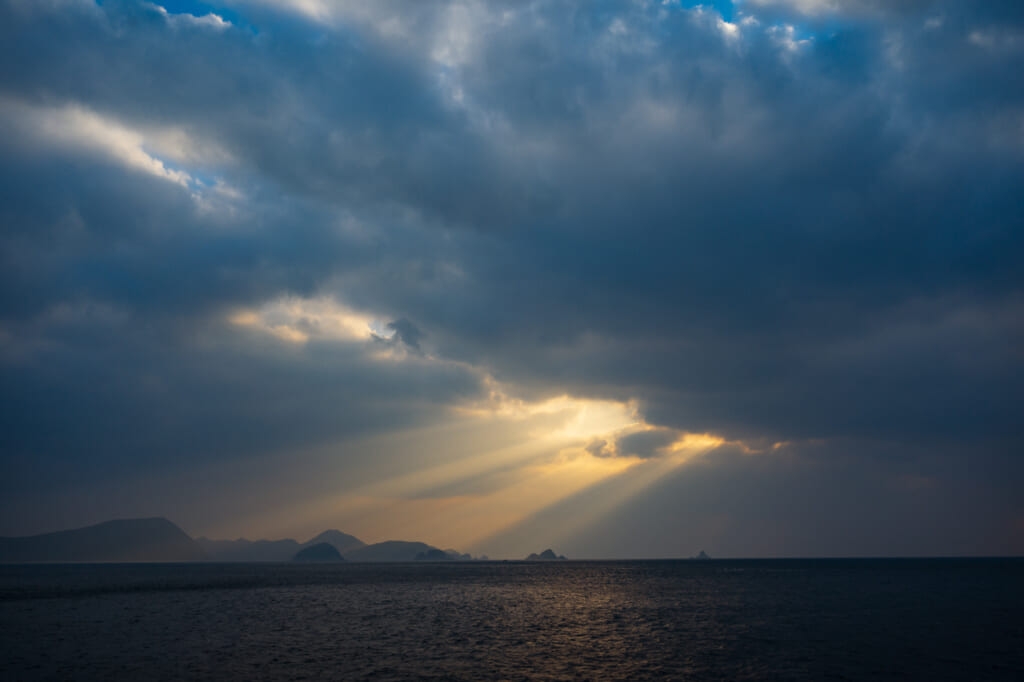
Like Hisaka, the most significant landmark on Naru is related to its Hidden Christian heritage. Egami Church stands in a grove of trees at the foot of the mountain in Egami Village. One might describe its whitewashed exterior and windows painted in a blue that nearly matches the color of nearby Okushi Bay as kawaii (cute), but inside, Egami is another stately, elegant masterpiece of wooden architecture. Protected from the elements by standing on pillars about a meter off the ground, the wooden church has weathered the elements well since its establishment in 1918. Unlike many other churches whose construction was funded by the Catholic missionaries to Japan from abroad, Egami was funded by the local Christians with money provided from an exceptional fishing year. Today, the church is still used by the public for Catholic mass once per month. If you’d like to see the inside of the church, you’ll need to make a reservation beforehand, as it is a place of worship and not necessarily a tourist attraction. Like the Former Gorin Church, it is best to make a reservation online if you intend to visit.
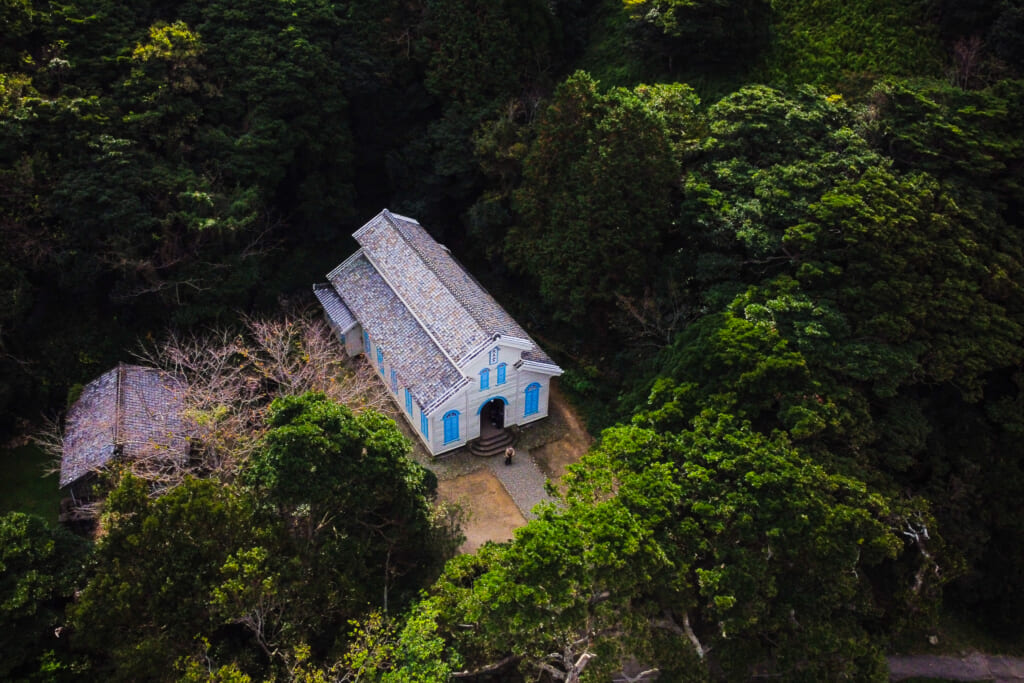
The “face” of Egami Church
After visiting Egami Church, we headed by car to the Kasamatsu Hirotomo museum, in the main building of a former elementary school and other community art workshops. The artist Kasamatsu grew up in Goto, and his work was inspired by two things: his Catholic upbringing, which can be seen in the inclusion of angelic images in his paintings, and his fashion designer wife. His wife’s influence can be seen in the elegant clothing worn by the models in his work and the fact that many of his subjects are headless mannequins, a sight which was apparently quite common around his house. The gallery is quite modest and will take only about 30 minutes to explore, but at nearby Sankyodai Kobo (Three Brothers Workshop), you can try making some of your own art.
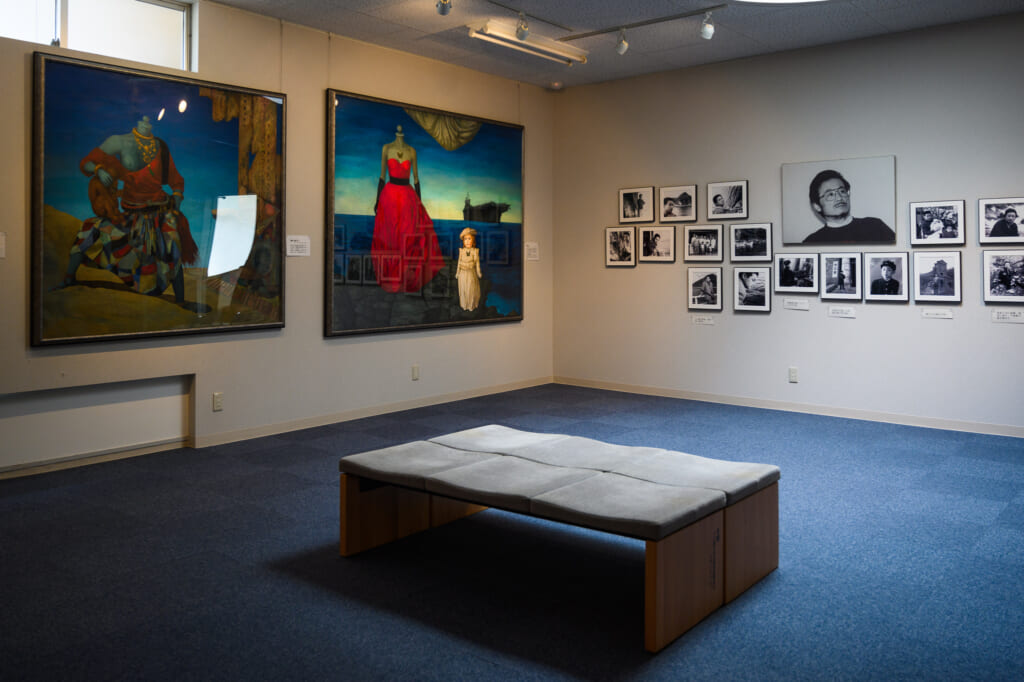
Create Your Own Masterpiece from Camellia Wood
As you might have guessed, Sankyodai Kobo was founded by three brothers whose primary work is construction and architecture. As Naru was becoming a more popular tourist destination, they made some simple keychains with images of Goto burned into them as free souvenirs for visitors to take home. The souvenirs proved to be more popular than they imagined, so they turned their little experiment into a business, now run by one of the brother’s sons.
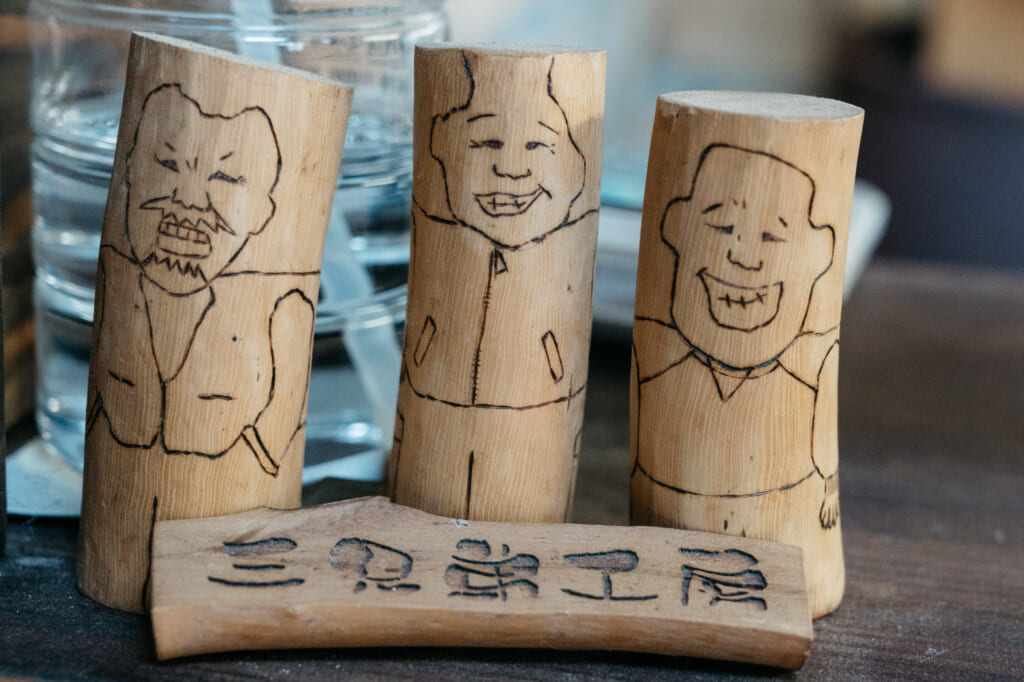
If you think the workshop is just about making your own souvenirs from wood using a woodburning tool, then you would have missed out on the most important thing: the wood itself. Most of the wood used at Sankyodai Kobo is from the camellia tree, one of the region’s most important sources of income as producers of camellia oil. Larger branches are sliced into pieces suitable for making keychains, but first, the slices need to be processed by soaking them in water, drying them on a rack, and sanding them down in several steps to give them an almost silky smooth complexion.
Thinner branches are also treated, but instead of slicing them, they are hand-carved into traditional Japanese stamps called hanko, which are often used in place of signatures on forms and paperwork. The dual purpose of treasuring the resource that has made the Goto Islands thrive and creating as little waste as possible from the camellia trees makes Sankyodai an excellent example of sustainable tourism in the Goto Islands.
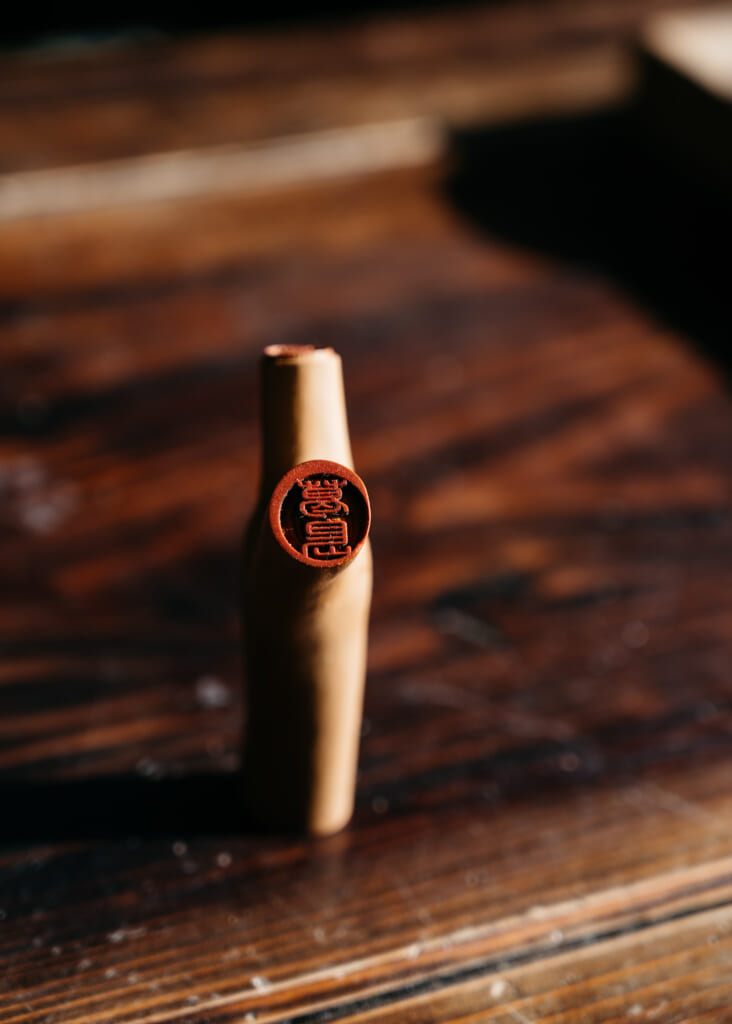
By now, we had worked up a bit of an appetite, so it was time to visit a local favorite, Mikanya, for a filling meal of Nagasaki Champon.
Nagasaki Comfort Food at Mikanya
Mikanya is located in a nondescript white building a few doors down from the local supermarket on Naru. We shared the restaurant with a few local construction workers and others who knew this is the kind of place you go on Naru for cheap, delicious local-style grub.
Look for the Mikanya noren curtain
I had come for a specific reason, which was the method in which the people of Nagasaki sometimes eat their ramen and champon: with fried chicken dumped into it. The champon at Mikanya can be ordered with three huge pieces of chicken karaage served on the side. But the chicken isn’t meant to be eaten separately but dumped into the champon, where the oil and batter of the chicken add flavor to the broth and vice versa. It was an experience I had missed since my favorite Nagasaki ramen restaurant had moved from a location 10 minutes from my house into central Tokyo four years ago.
Put the chicken karaage in the soup!
After consuming such a huge meal, you might want to take your time exploring the rest of Naru before the last ferry of the day departs for Fukue around 5:30 pm. Most places on the island are easily accessible with a rental car, so choose destinations from observation points atop Naru’s interior mountains to unusual geological rock formations along the coast to enjoy and explore.
Fukue – Goto City’s Largest Island
For my final day in the Goto Islands, we explored some of the places in Fukue that I missed on my visit a few months prior. At that time, the Gotoshi Garden and Residence was closed for maintenance, but it was fortunately open again for my second trip. This lovely place is still privately owned by the 30th generation of the Goto family clan, and Olivier recalled a day when he greeted the current Goto lord as he was doing some light yard work outside the residence. Apparently, lordship doesn’t come with all the perks it had 300 years ago.
The garden was designed by Zensho, a Kyoto monk famous for designing gardens in prominent temples in the old capital. Rumor has it that Zensho may have been shipped off to Goto as punishment for his weakness for Japanese sake, but their loss was Goto’s gain. Zensho designed the garden around the enormous 800-year-old camphor tree, and every view of the garden features its ancient beauty. The Lord of Goto who commissioned the garden also loved turtles, and you will find dozens of images of or references to turtles hidden around the garden, including the two turtle-shaped islands in the pond.
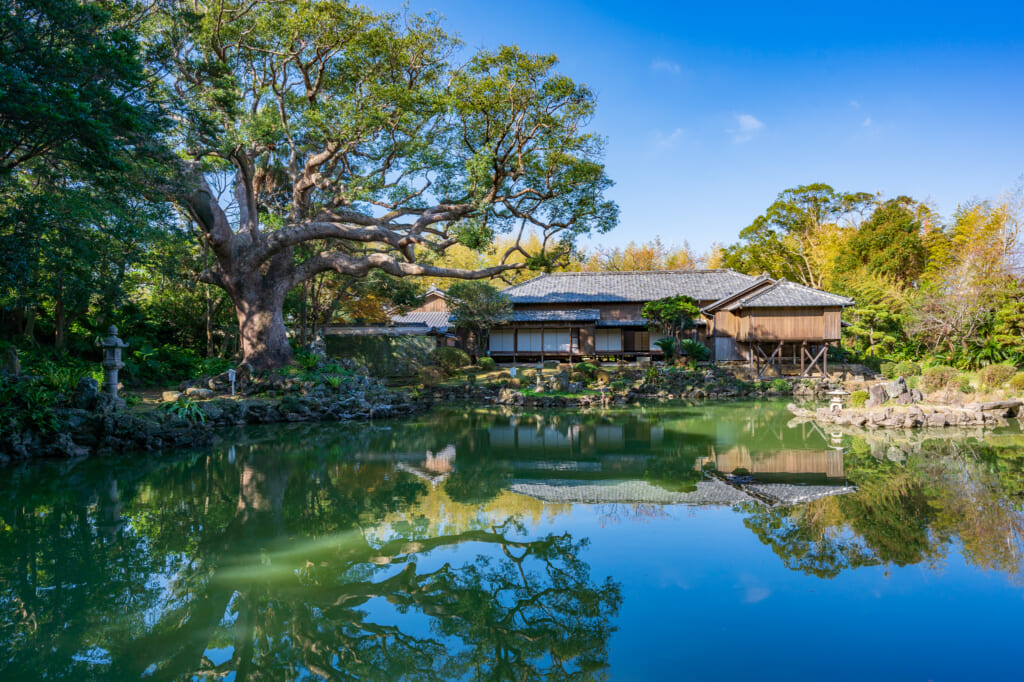
The residence was built in 1861 and is a magnificent example of a late-Edo period samurai residence. Hidden rooms and secret passages were built into the house to protect the lord and his family from any surprise attacks by enemies. The wallpaper used in the rooms looks as if it could be from a modern home, but look closely; the designs use auspicious symbols and numbers. Because the house was never involved in any battles or natural disasters, there is a lot of detail in its design that you can appreciate in its original form.
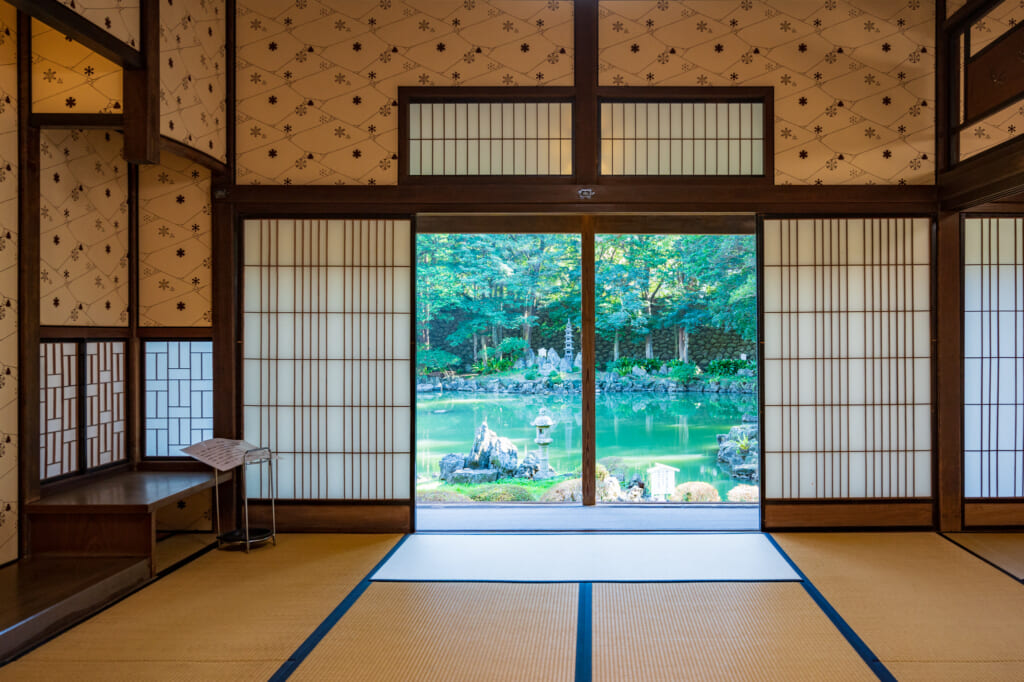
Goto’s Precious Export – Tsubaki Oil
The tsubaki (camellia) oil trade has been an essential part of Goto industry. Though few Westerners have heard of the benefits of tsubaki oil, it is well known in Asia for its use in both food and beauty products. High in antioxidants and similar in makeup to the oils protecting your skin and hair, tsubaki oil is good for you both internally and externally.
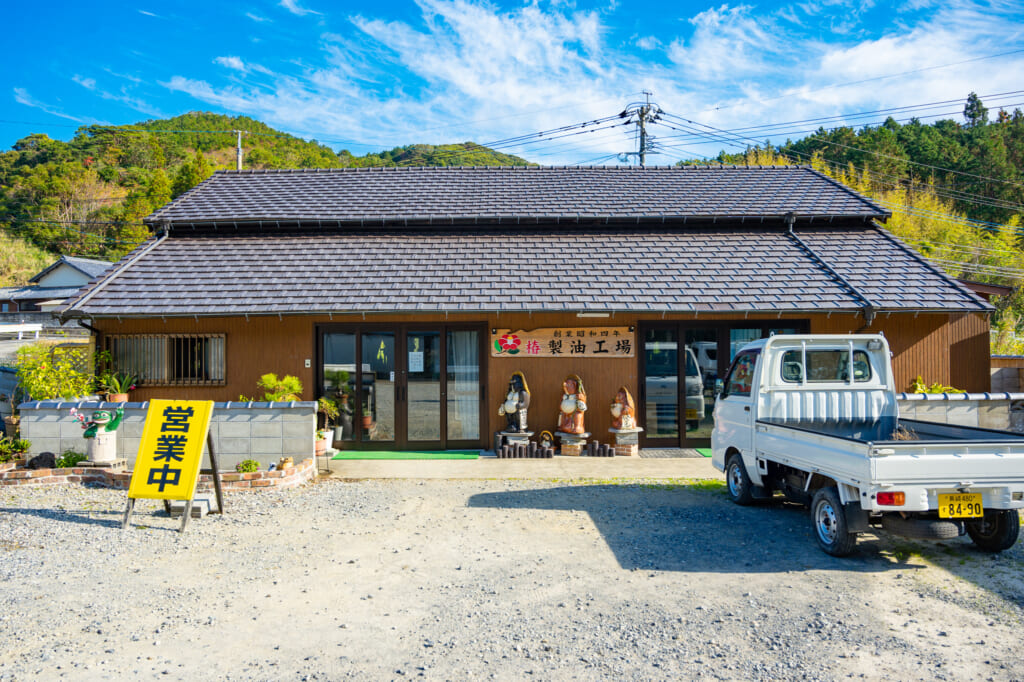
The Imamura Tsubaki Oil company is one of the larger producers of tsubaki oil on Fukue and counts among its clients the esteemed cosmetics company Shiseido. What sets Imamura apart from its competitors, besides the delightful husband and wife team who run it, is its use of the original equipment and processes for tsubaki oil extraction. Most companies have converted to modern equipment; even Imamura has a set they use primarily for cosmetic grade oil extraction. But Imamura also maintains the original equipment and processes from over 100 years ago, which Imamura-san explains leaves more flavor in the oil and is, therefore, better for producing food-grade tsubaki oil.
Once a week, on what is essentially their day off, the Imamura’s open their factory to visitors who wish to see how tsubaki oil was produced the good old fashioned way. The old machinery is loud and ornery, and the manual work involved in the process is tedious for even a young worker. But the Imamuras demonstrate the process from grinding to steaming to pressing to refining without breaking a sweat or losing their smiles. On one of the walls, photos of famous visitors to the factory are displayed, including the popular Sumo wrestler Yokozuna (highest rank), Hakuho.
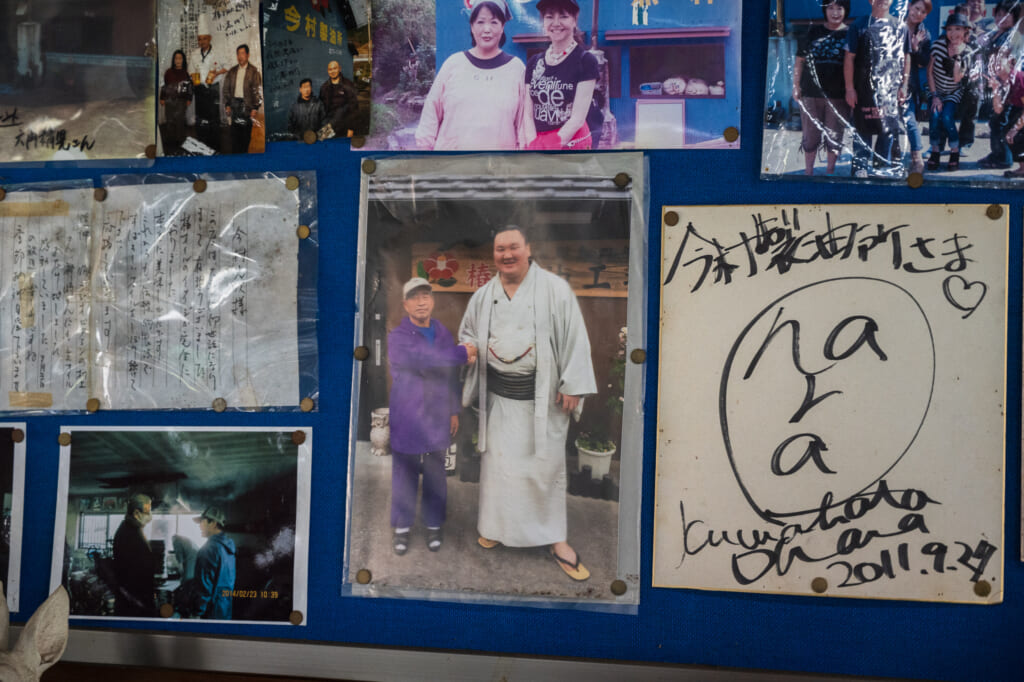
There is no offseason for tsubaki oil production. Even when the oil is not being produced, the Imamura’s must tend to their grove of 4,000 camellia trees to keep them healthy and productive. Mr. Imamura remembers growing up in the factory, helping with the work even when he was a child. Yet, he recalls even those times with a smile, satisfied that his family has made a valuable product for Japan and the world for decades, and proud of his work.
Where To Stay and Eat on Fukue
There is no shortage of places to stay or eat in Fukue, especially in the city center area. The Goto Tsubaki Hotel is the latest addition to Goto city’s list of accommodations, a contemporary hotel facing the harbor. Opened in June 2019, the hotel features spacious rooms with large beds, an Italian style restaurant, and a comfortably spaced out lobby to socialize or relax in. The hotel’s decor is derived from the island itself, with blue hues reminiscent of the sea and sky and images of flying fish.
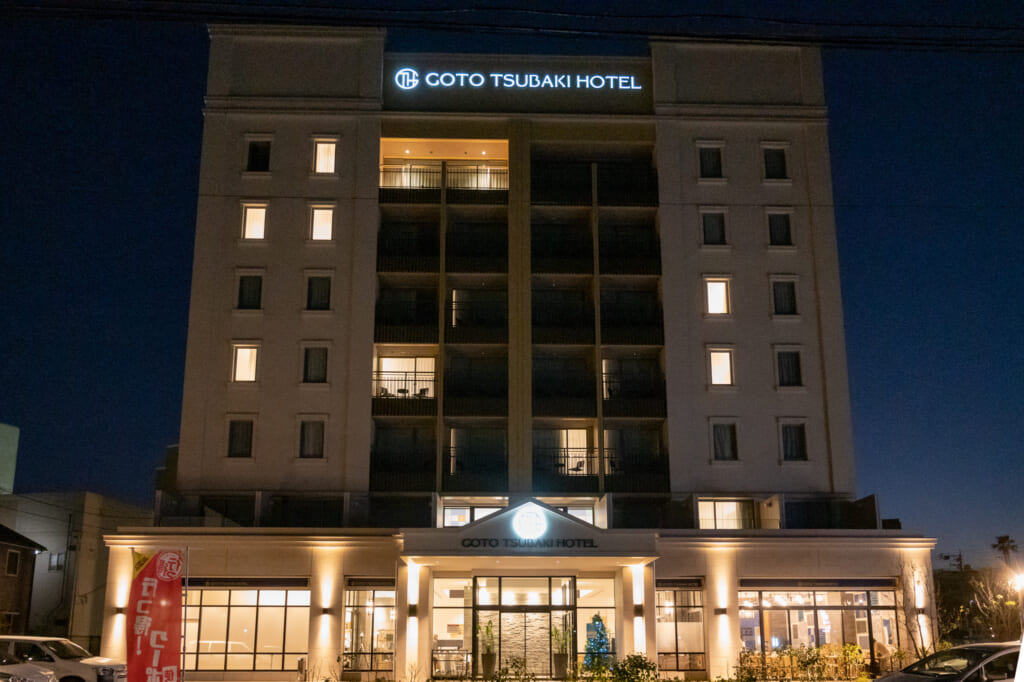
The Goto Tsubaki Hotel is centrally located, within walking distance of the Fukue Port and many restaurants if you crave something different from the Italian inspired fare of the hotel restaurant. Try some Goto beef from one of several yakiniku (grilled meat) restaurants in the area, or a sashimi rice bowl featuring whatever seasonally fresh fish are available around Goto. For a unique snack or dessert, be sure to check out the Furusatokan on the Samurai Residence street near the castle ruins. At the cafe here, you can try a dessert set with Goto’s unique kankoro mochi made with sweet potato and a cup of green tea or matcha.
Kankoro mochi is a sweet unique to the Goto Islands
Getting To the Goto Islands
It is more convenient than you might imagine to get to the Goto Islands. Even from as far away as Tokyo, you can reach the islands in just a few hours using flights from Tokyo to either Nagasaki or Fukuoka, then transferring to another flight for the short leg to Fukue. You can also take a jetfoil boat from Nagasaki to Fukue Port.
If you have more time and want to try a unique approach to the islands, try the overnight ferry leaving Hakata (Fukuoka) Port around midnight and arriving in Fukue the next morning.
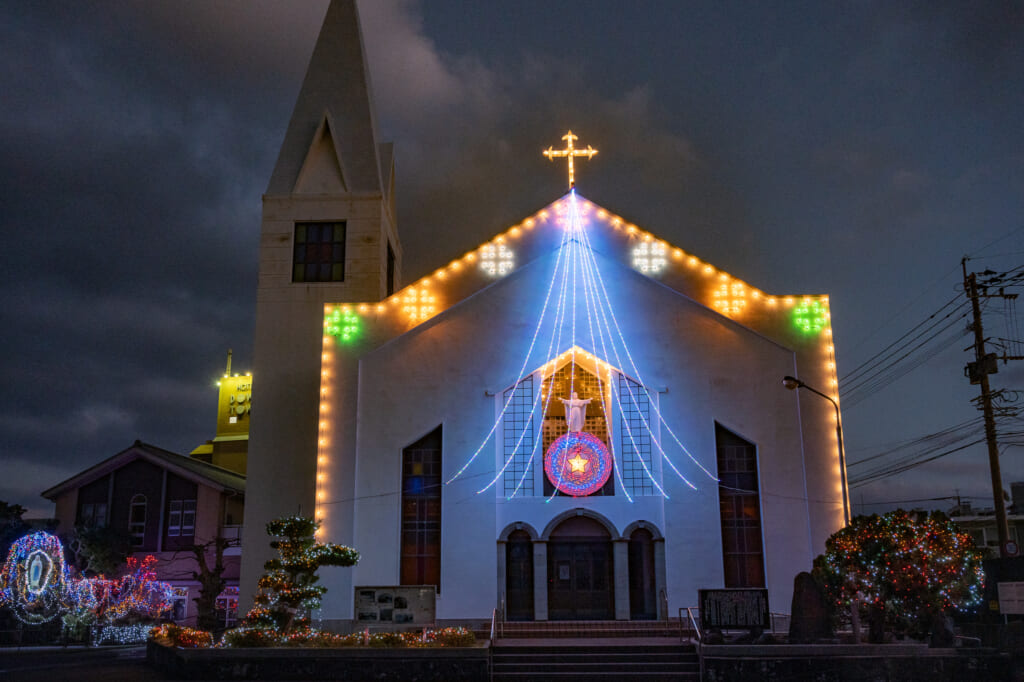
The islands that are part of Goto City may each have their own style and character, but they share a common history and natural beauty that lures visitors from around the world. I consider myself among the fortunate few to have been able to visit Goto twice in a year, yet I also realized I had many more reasons to return in the future. As the sight of the Christmas illumination of Fukue Catholic Church bid me farewell, I was already looking forward to saying hello again soon.
Sponsored by Goto City


